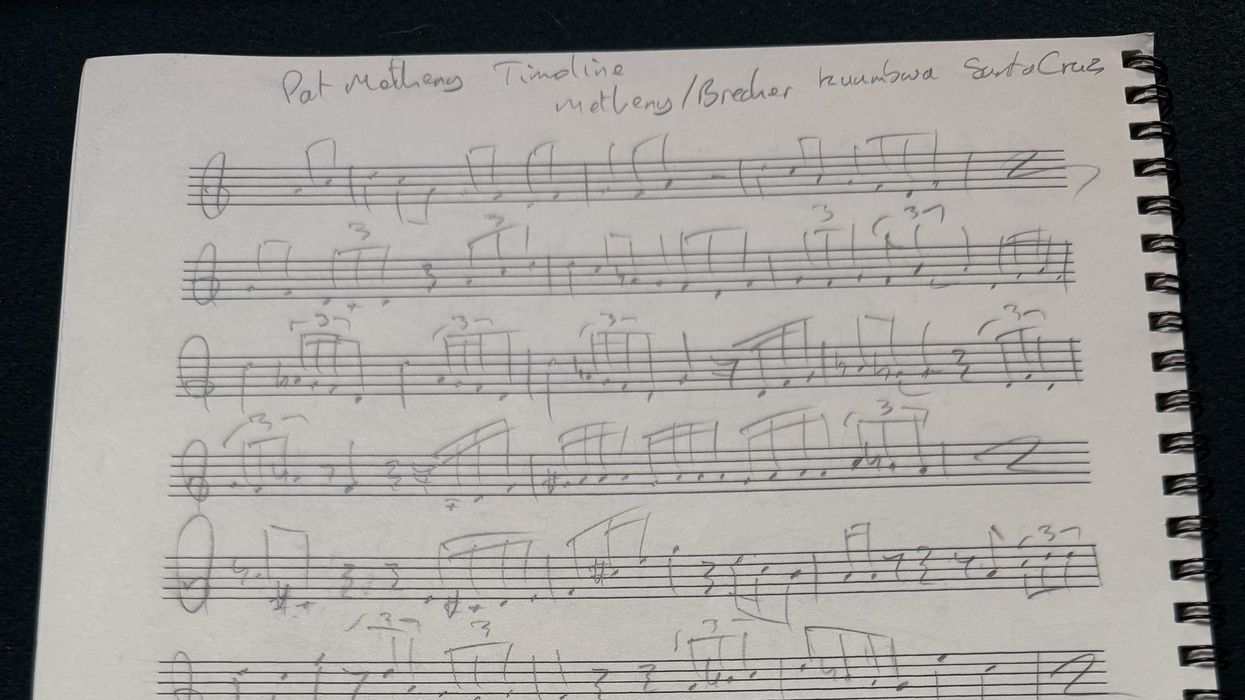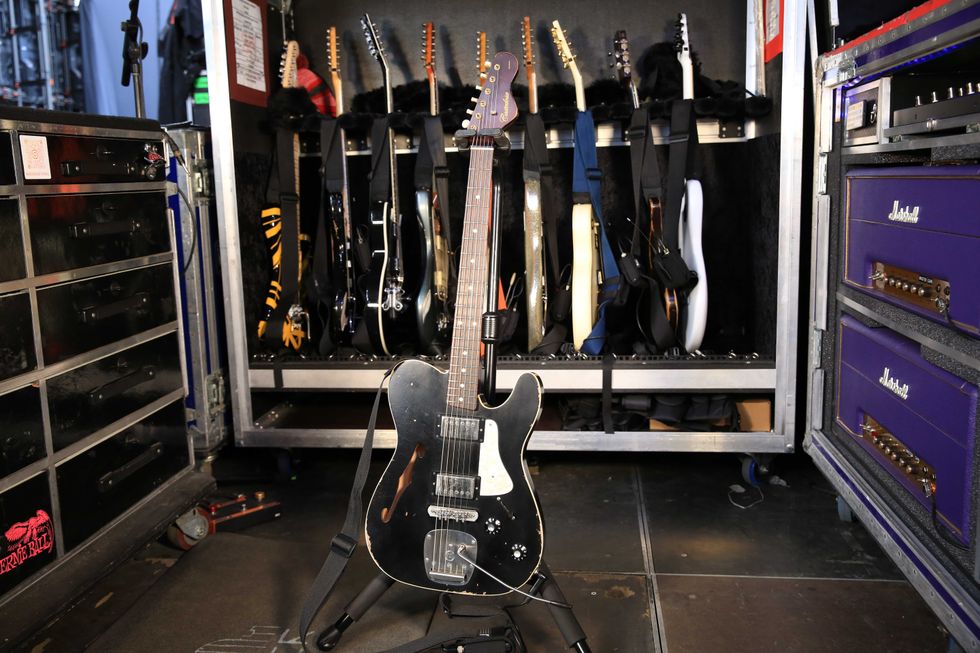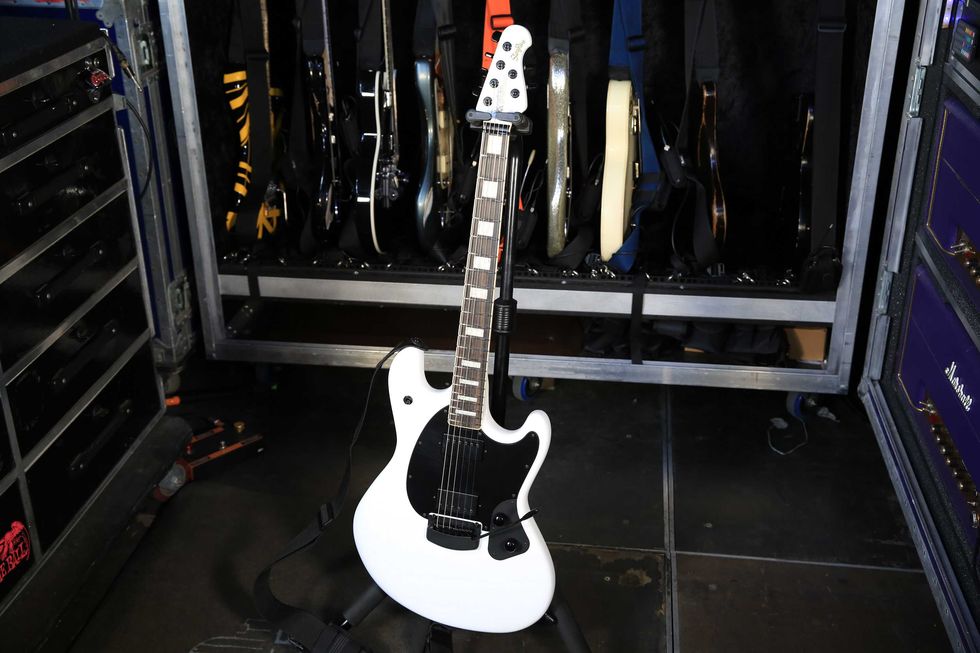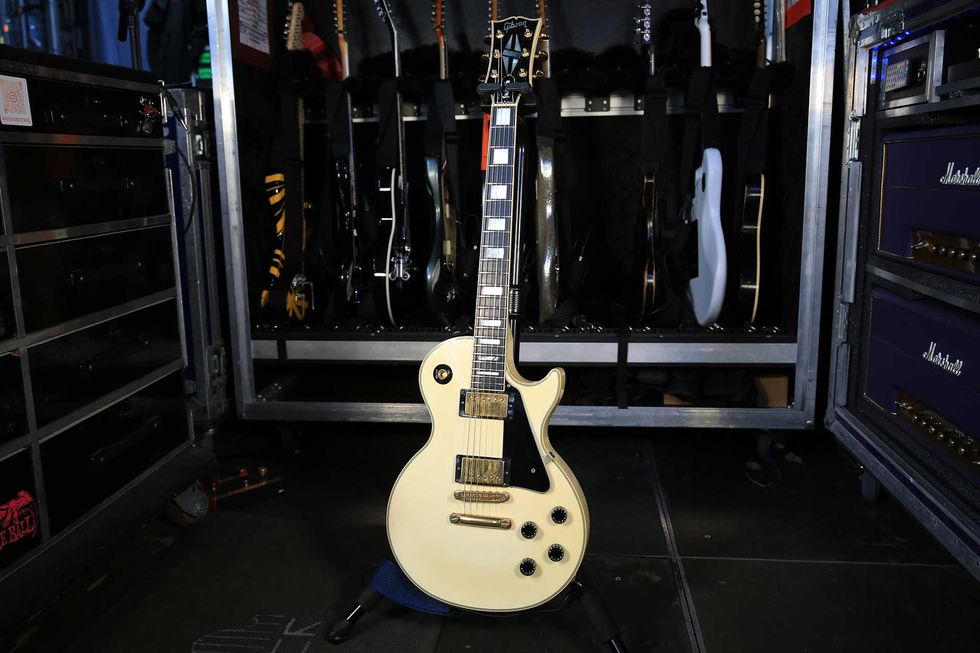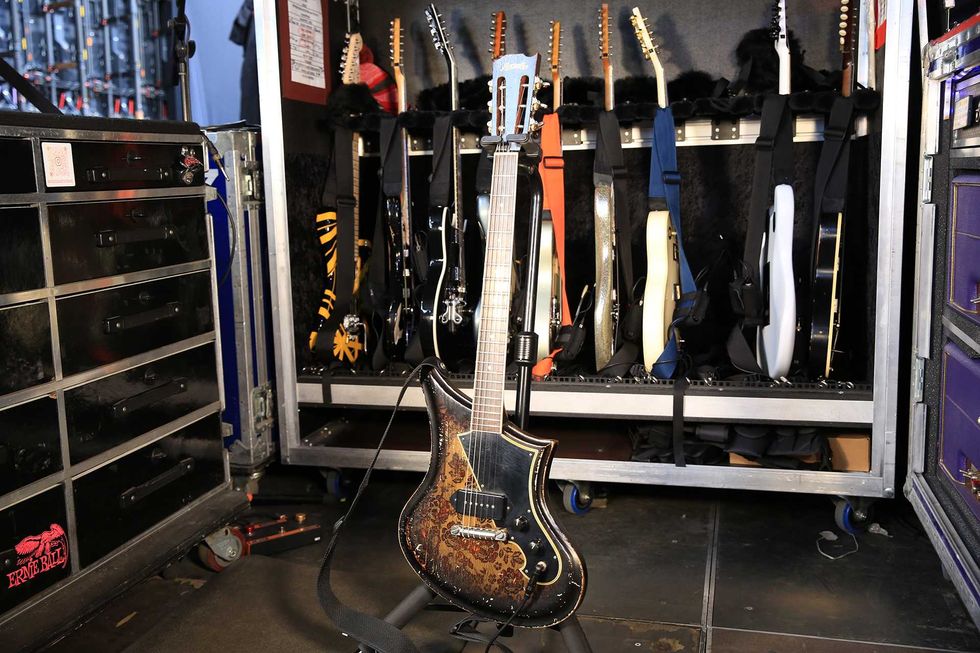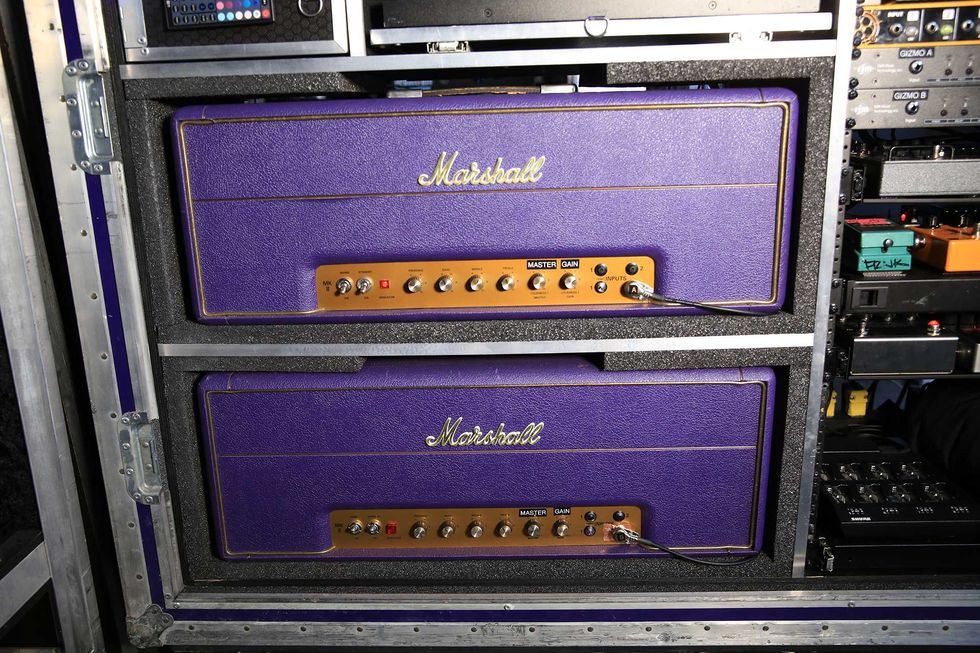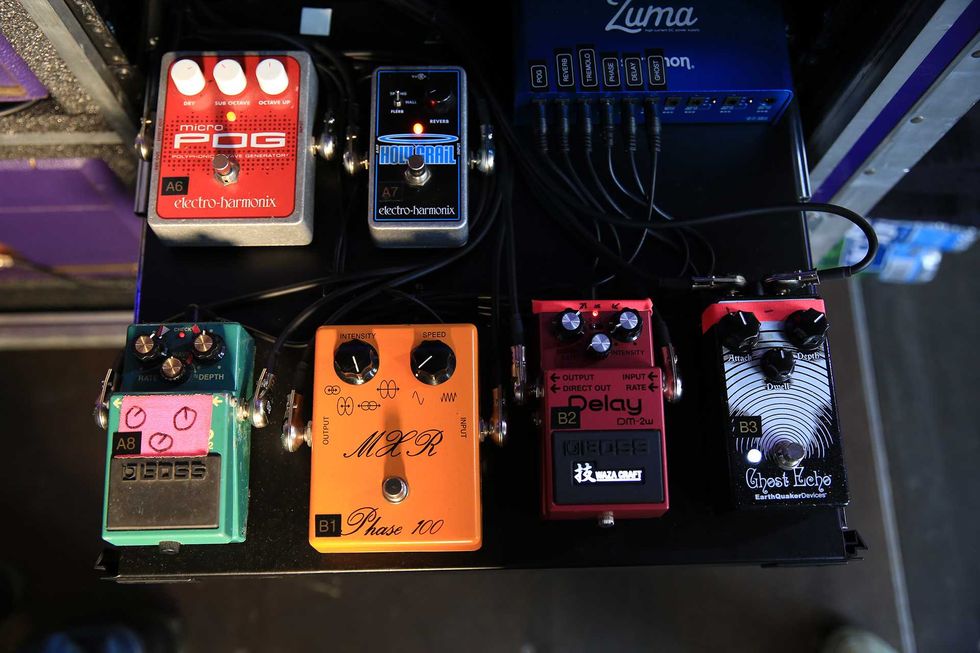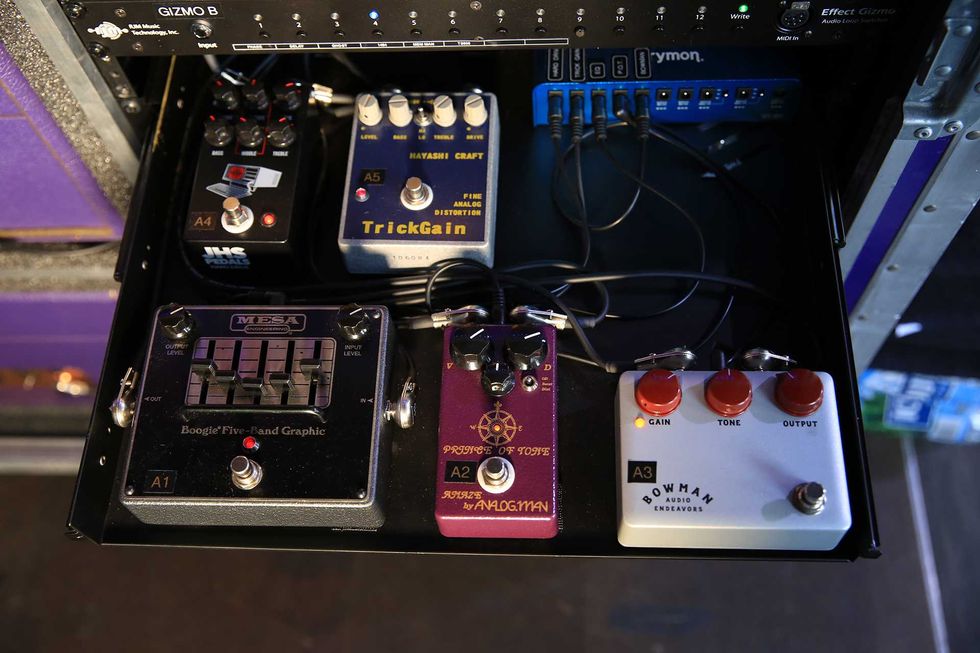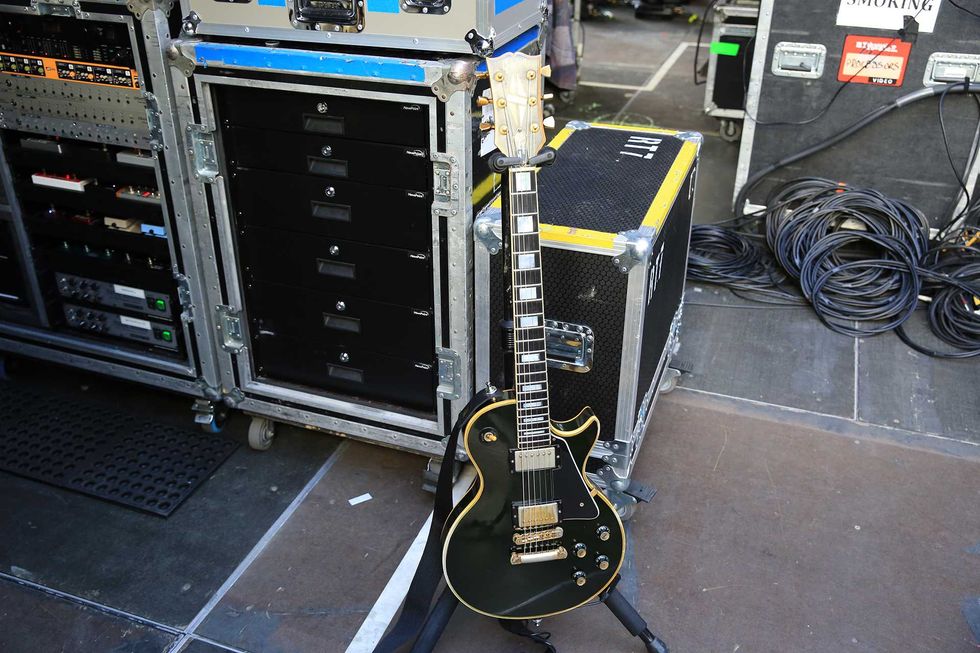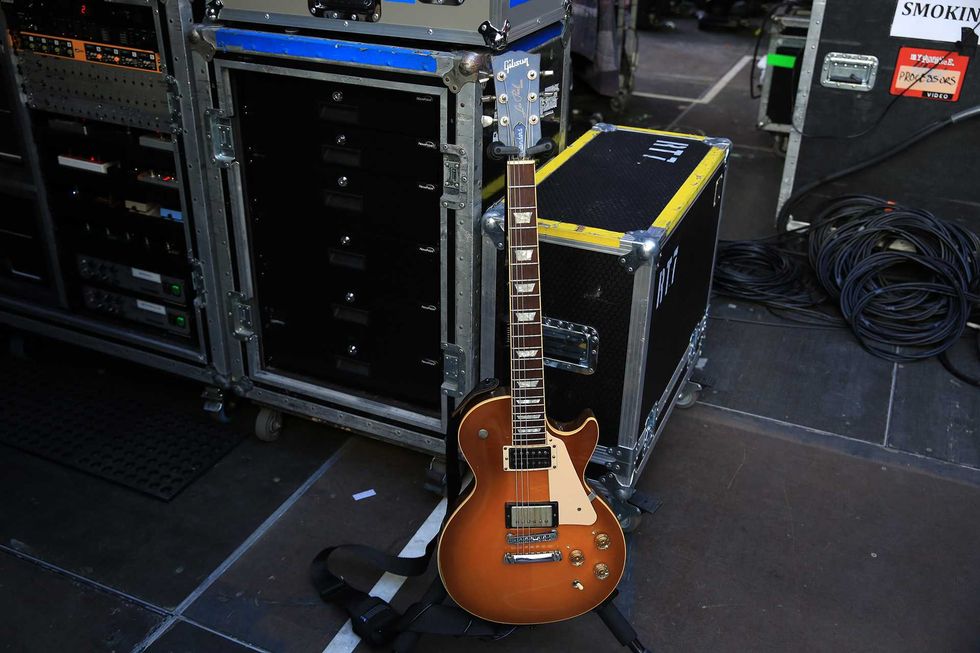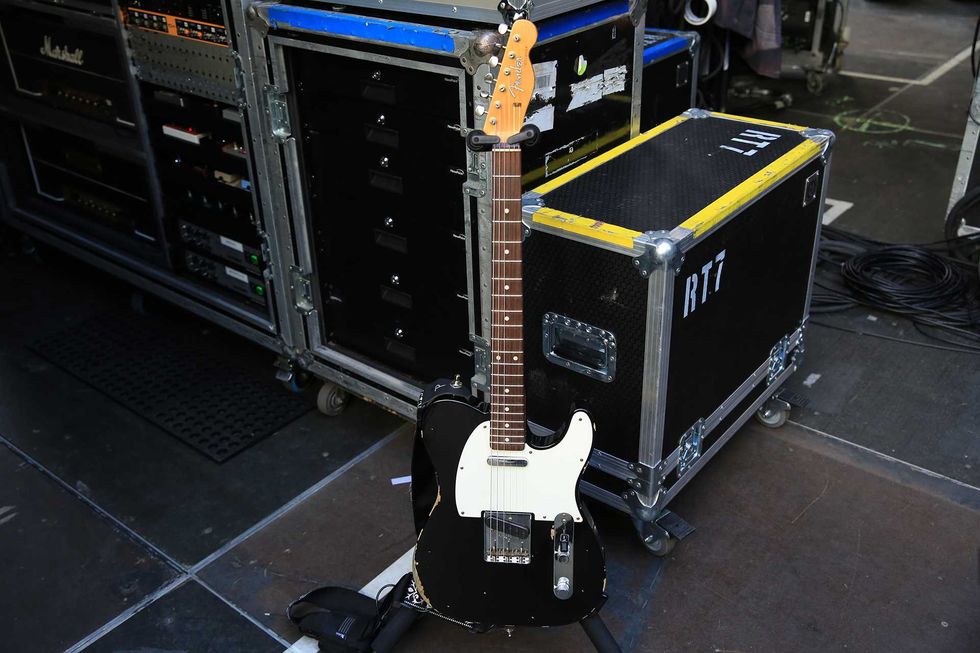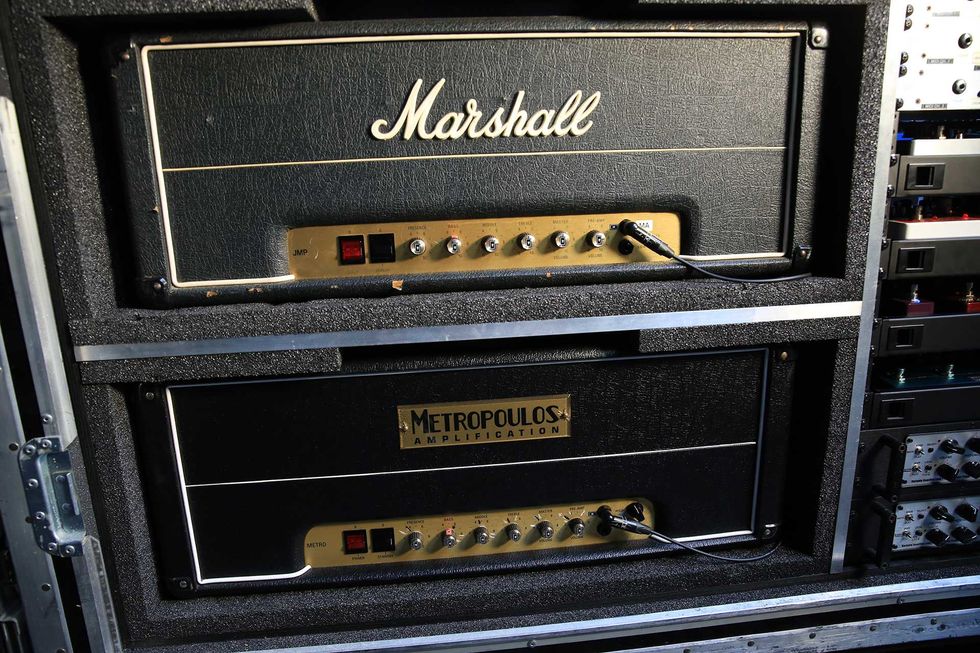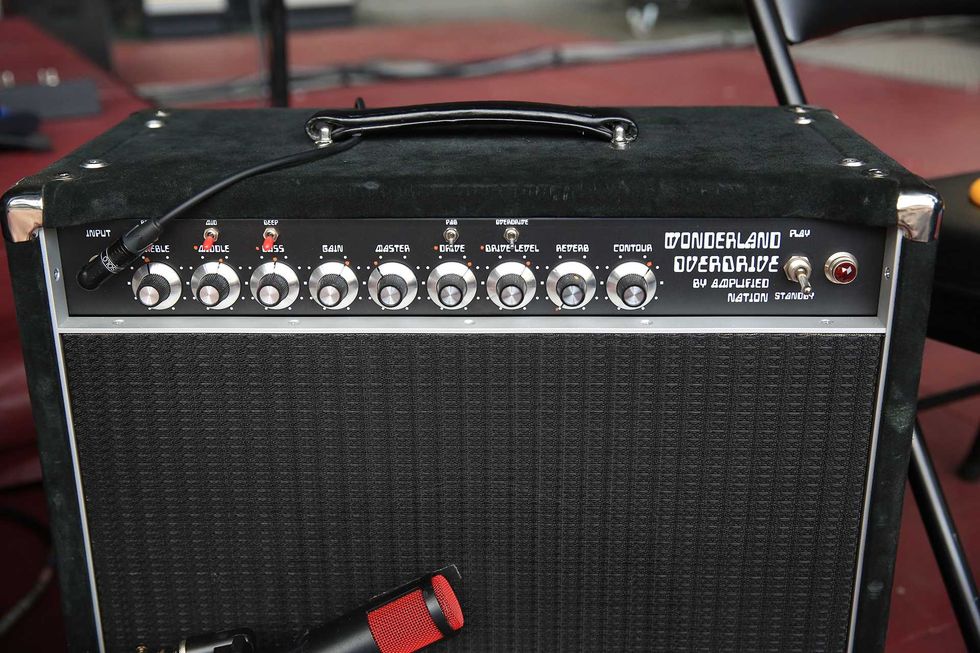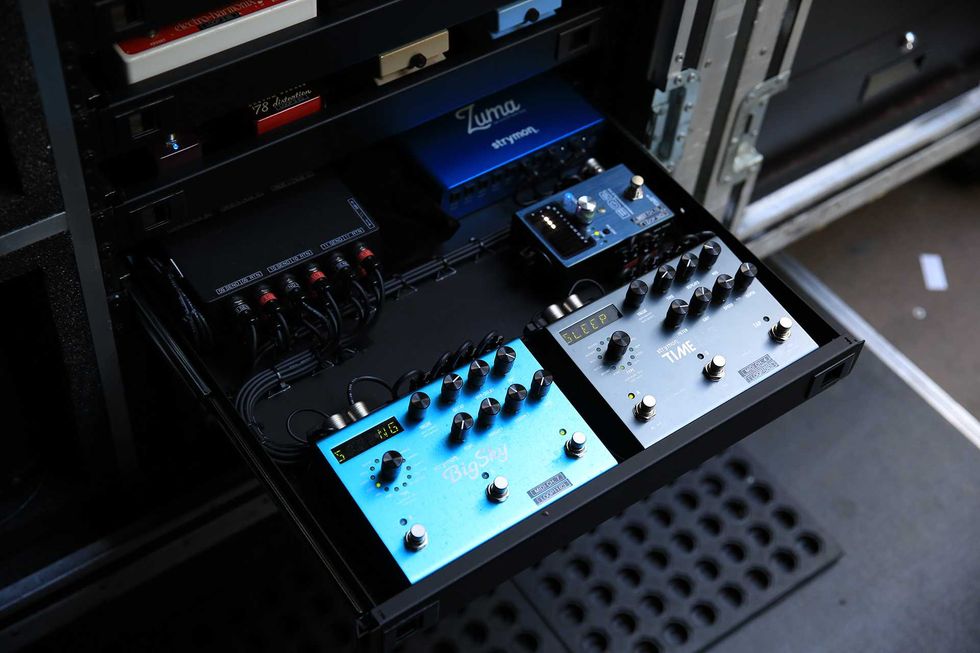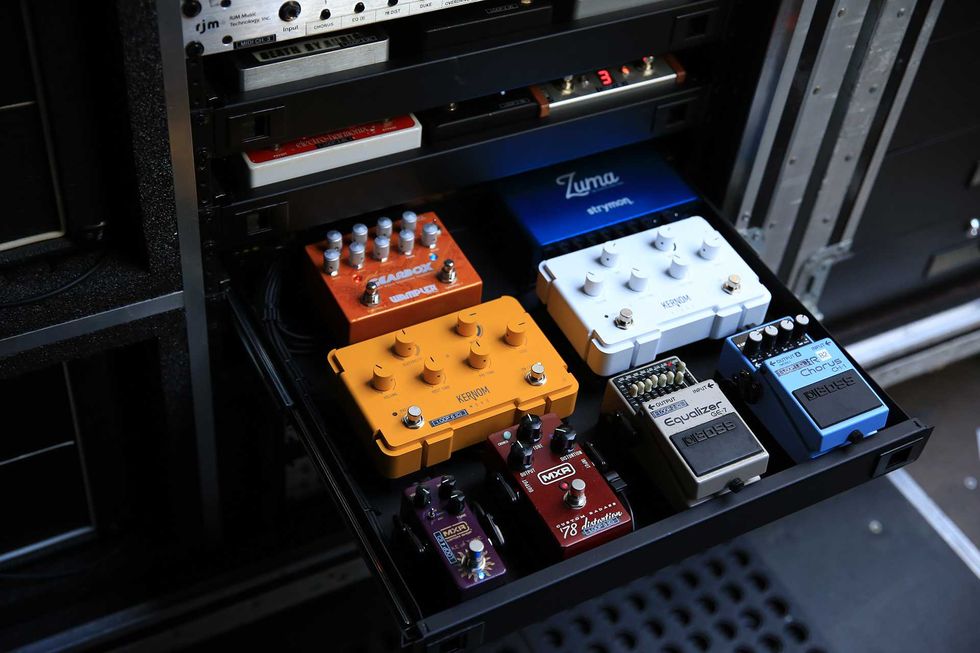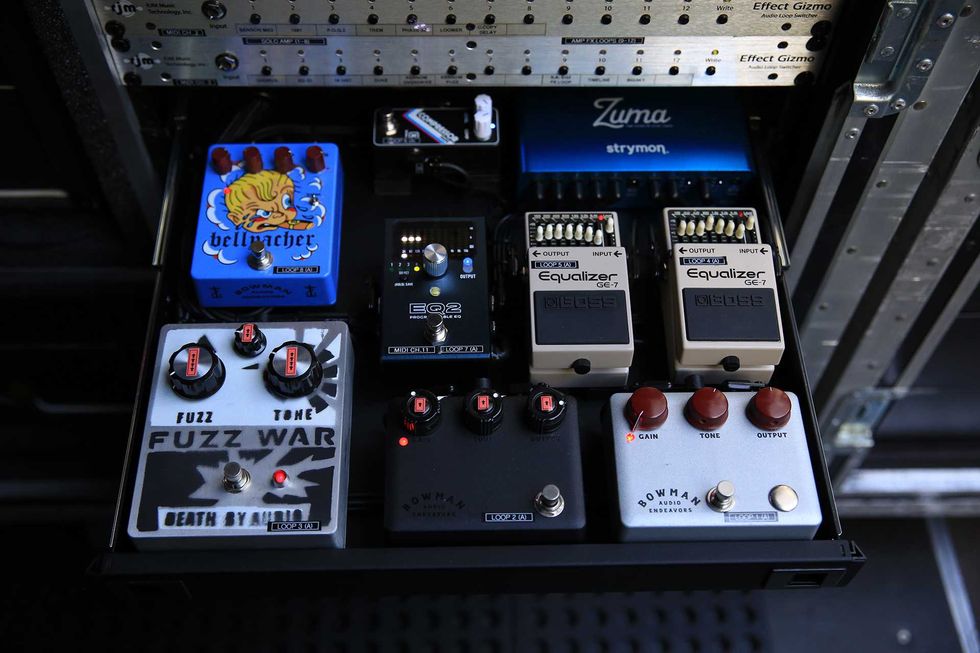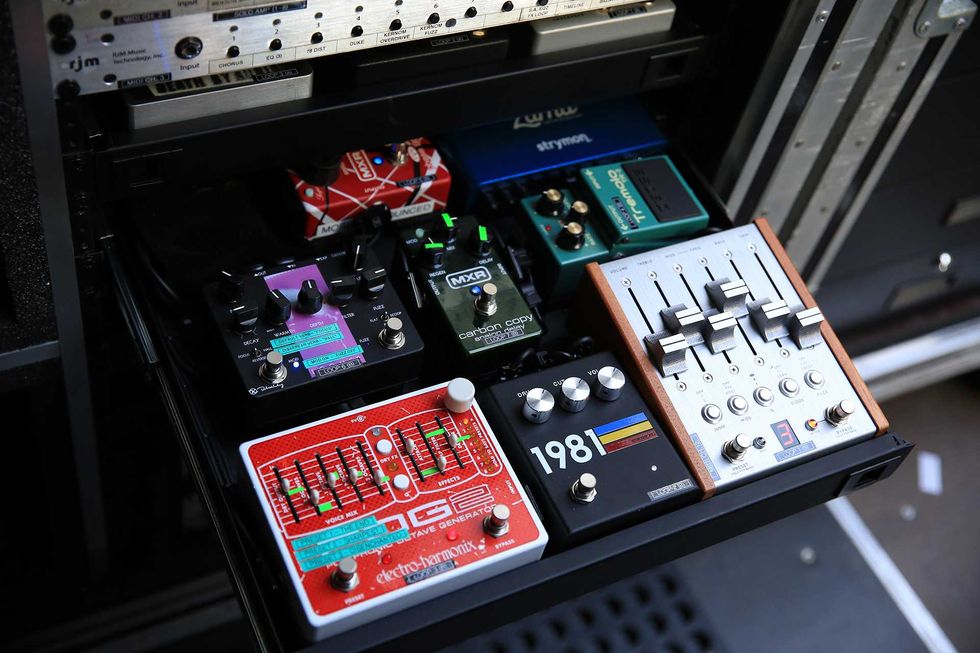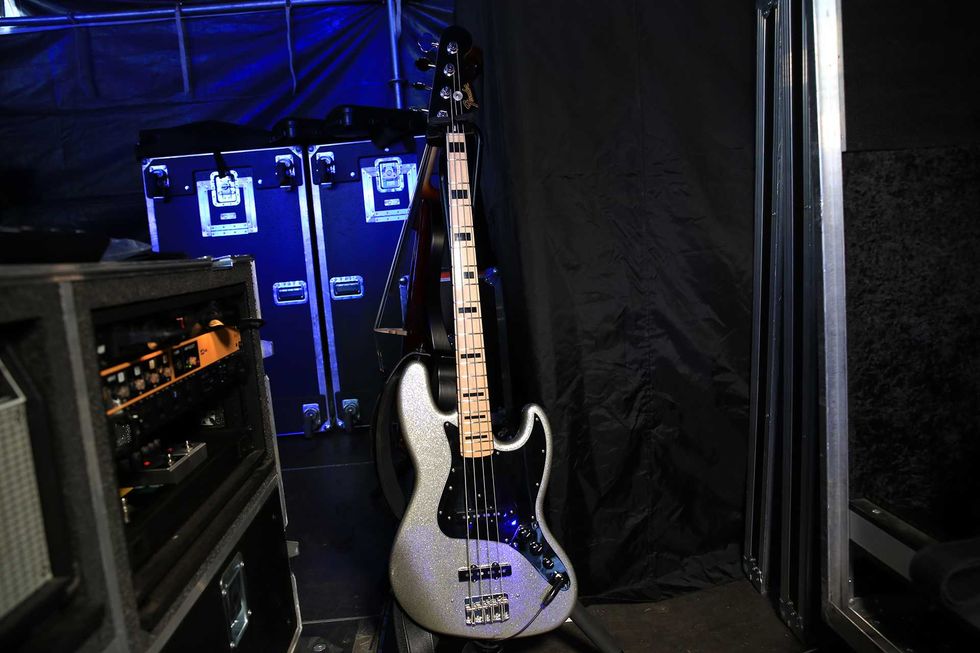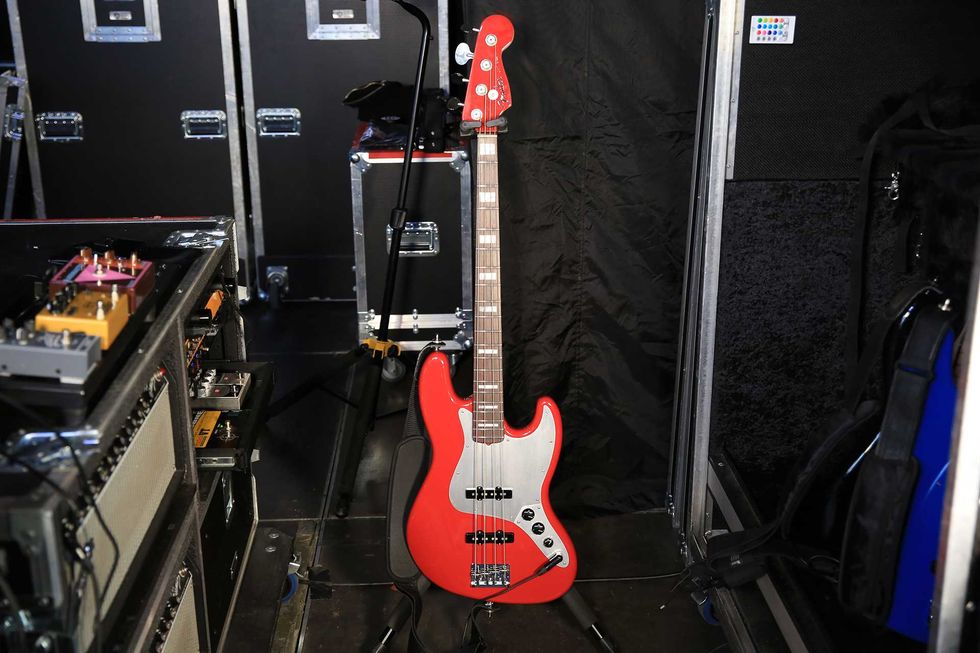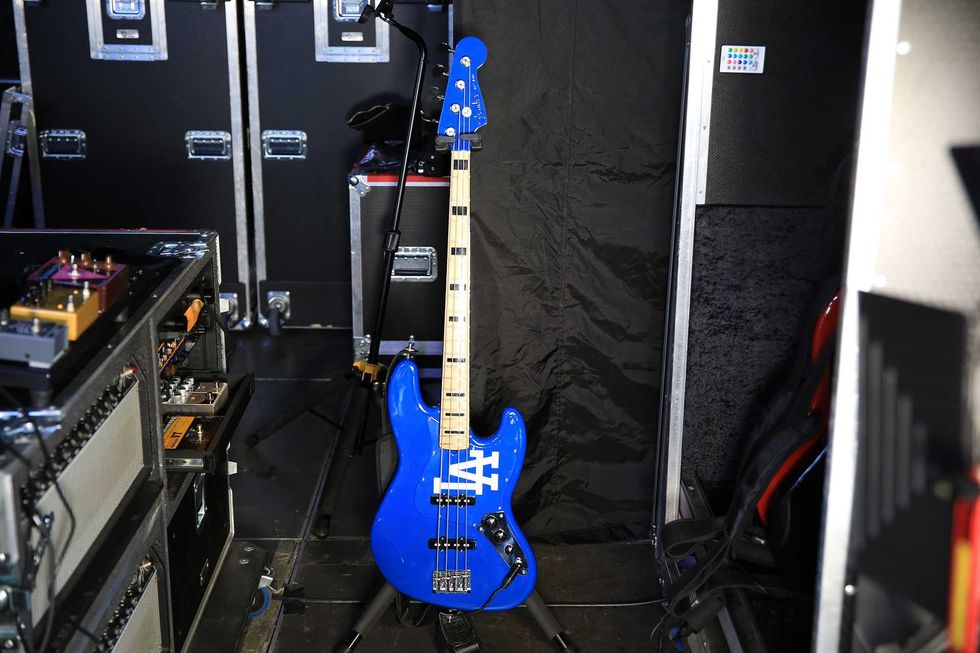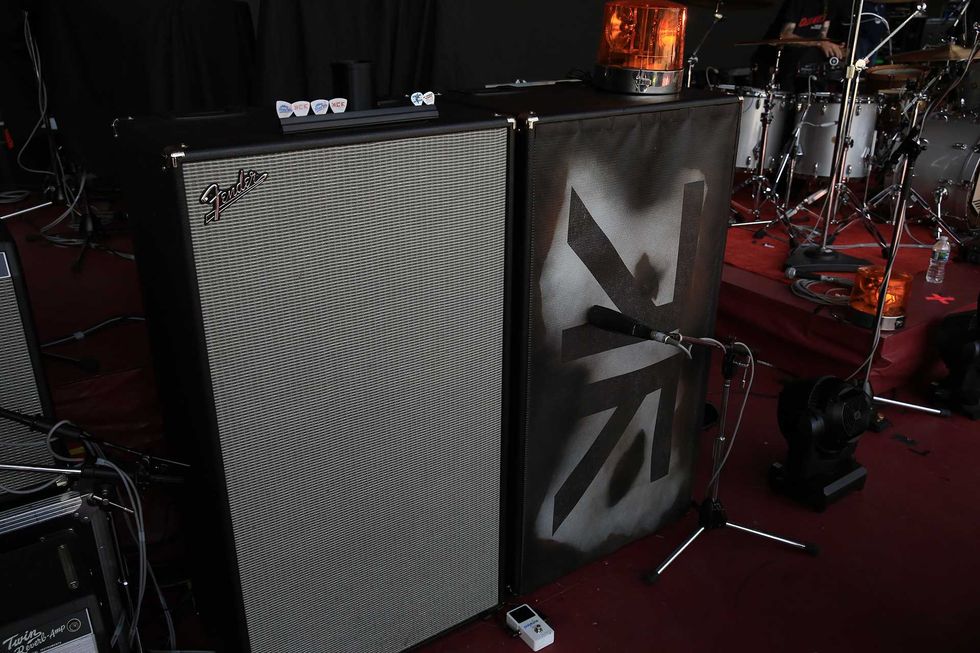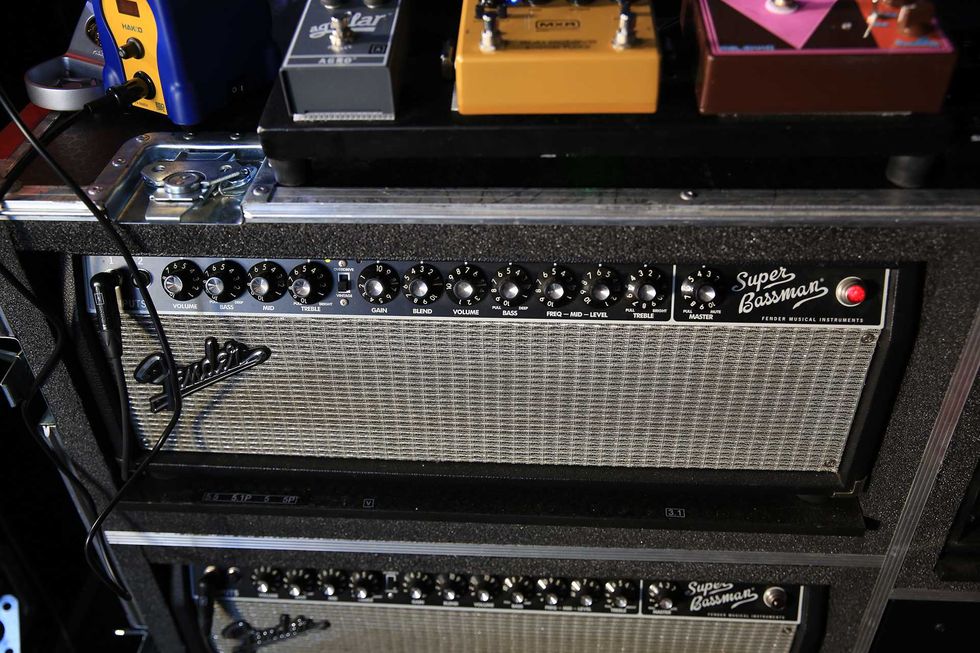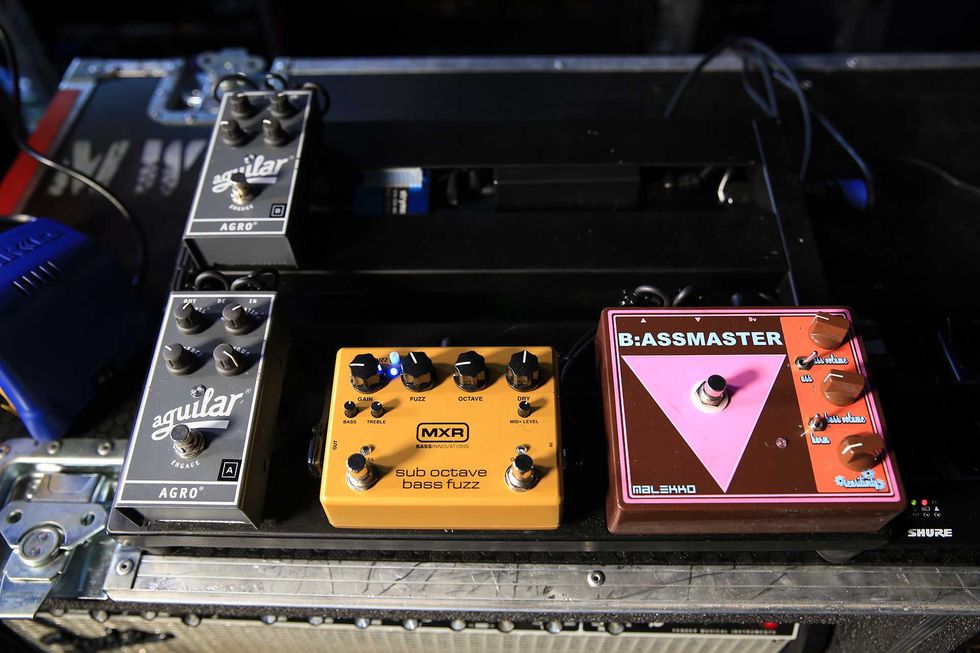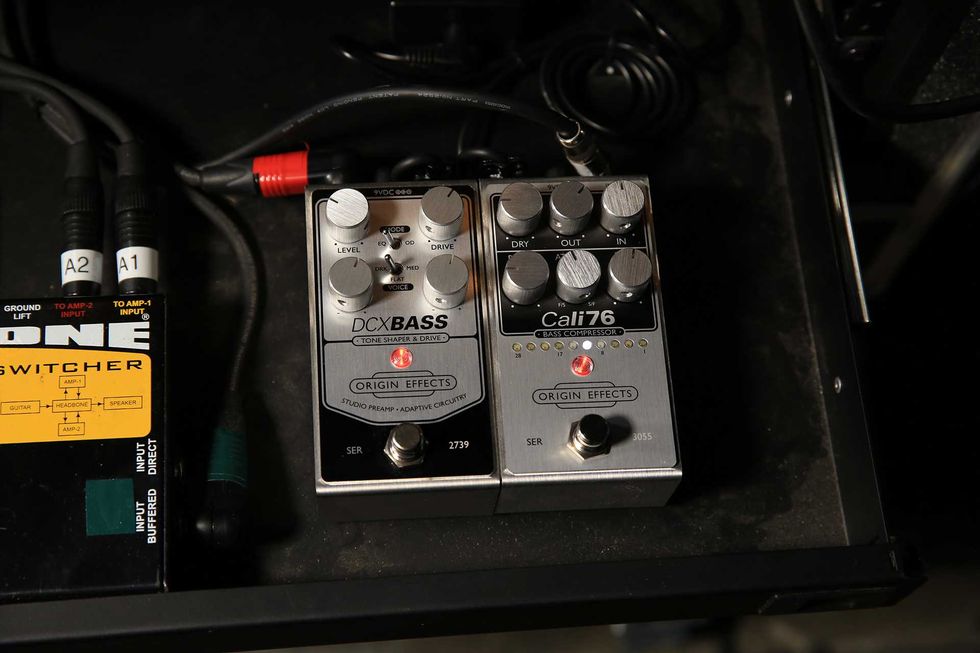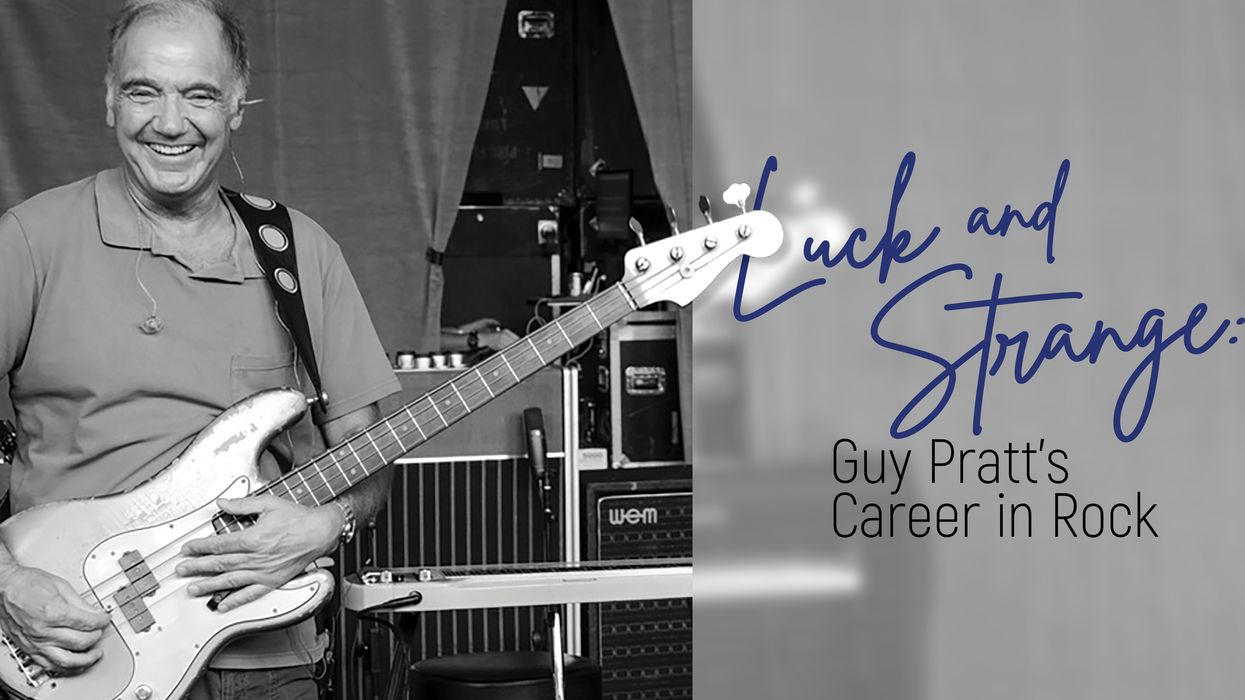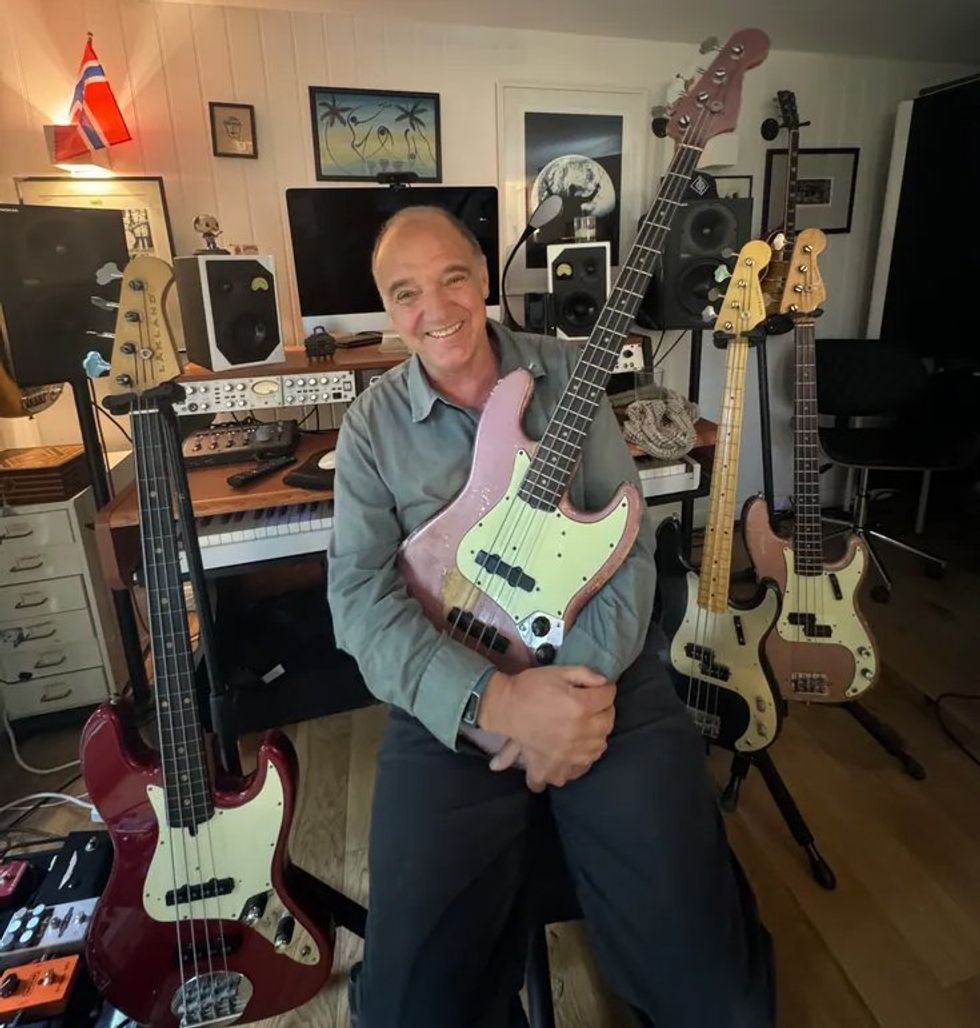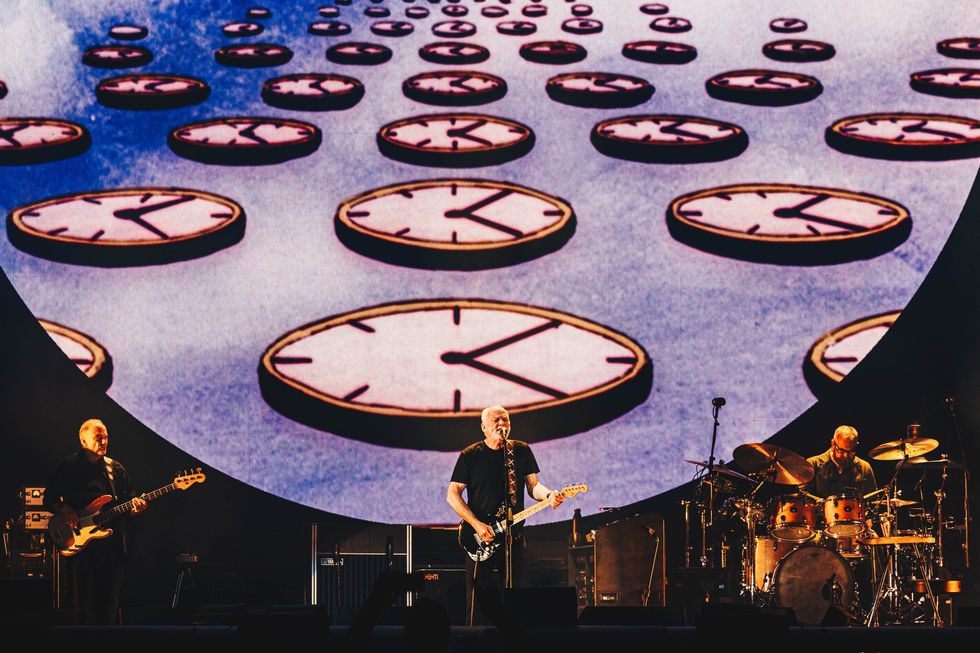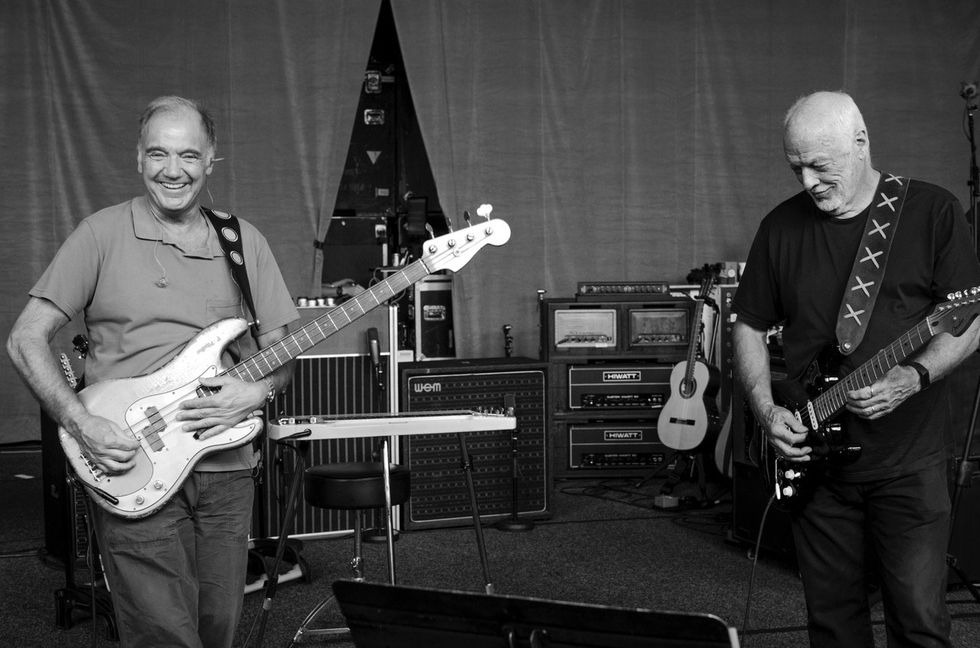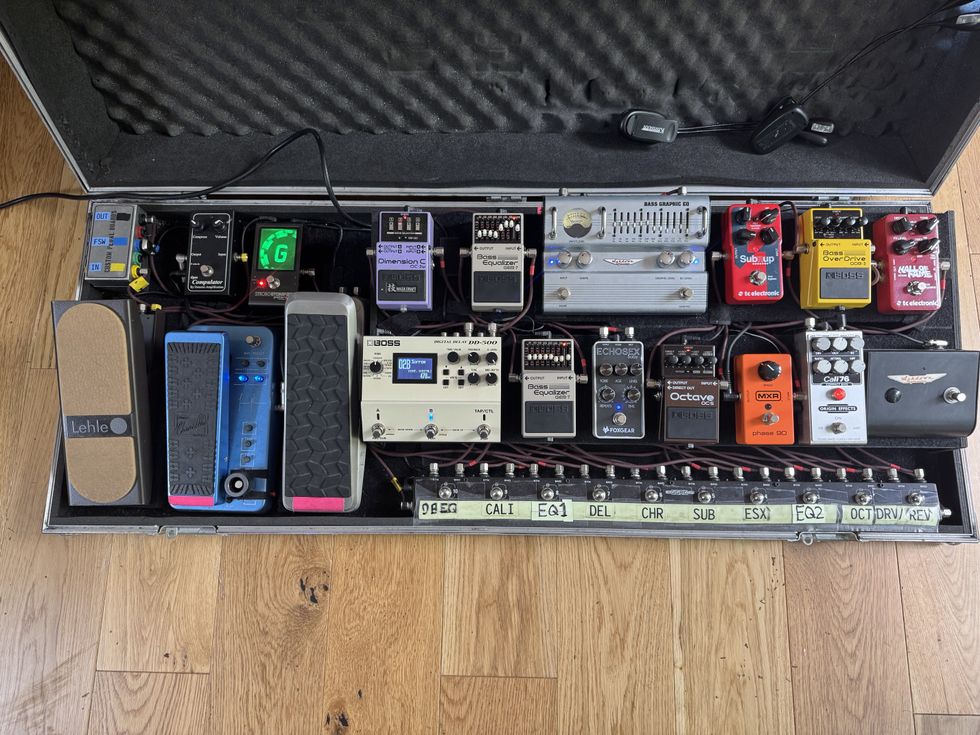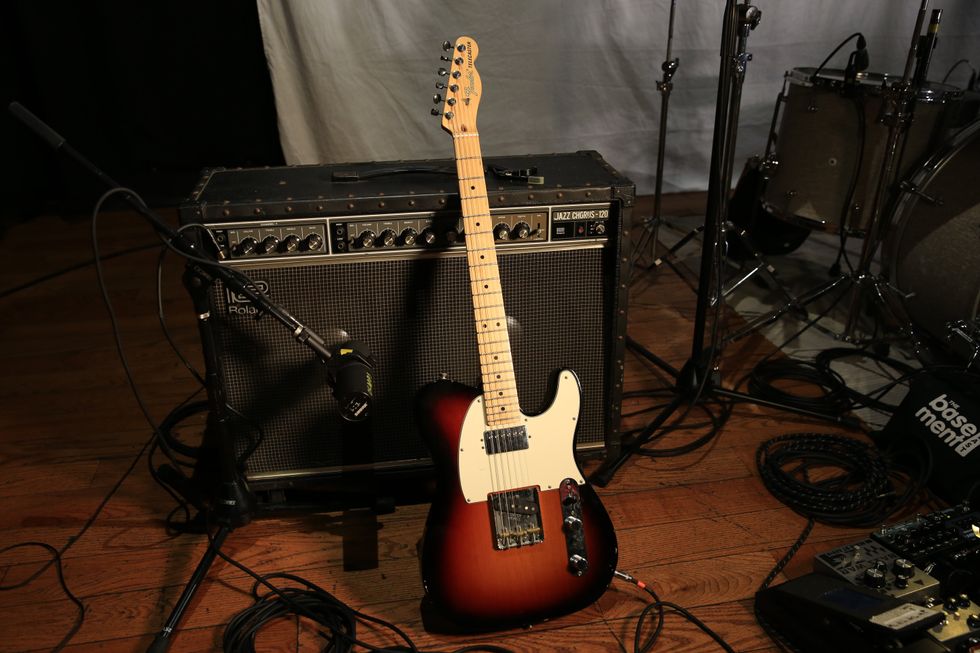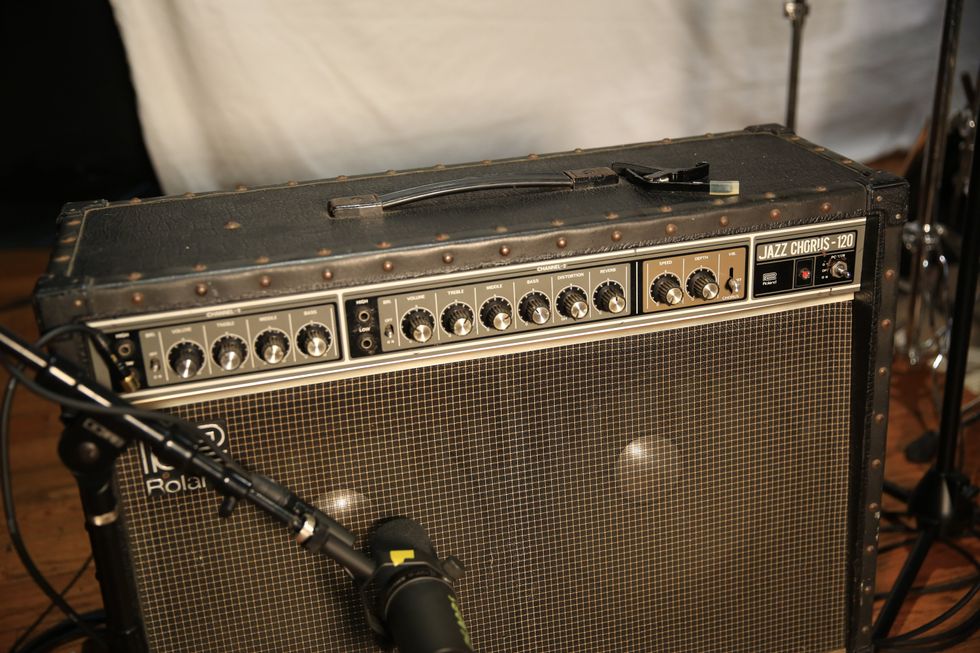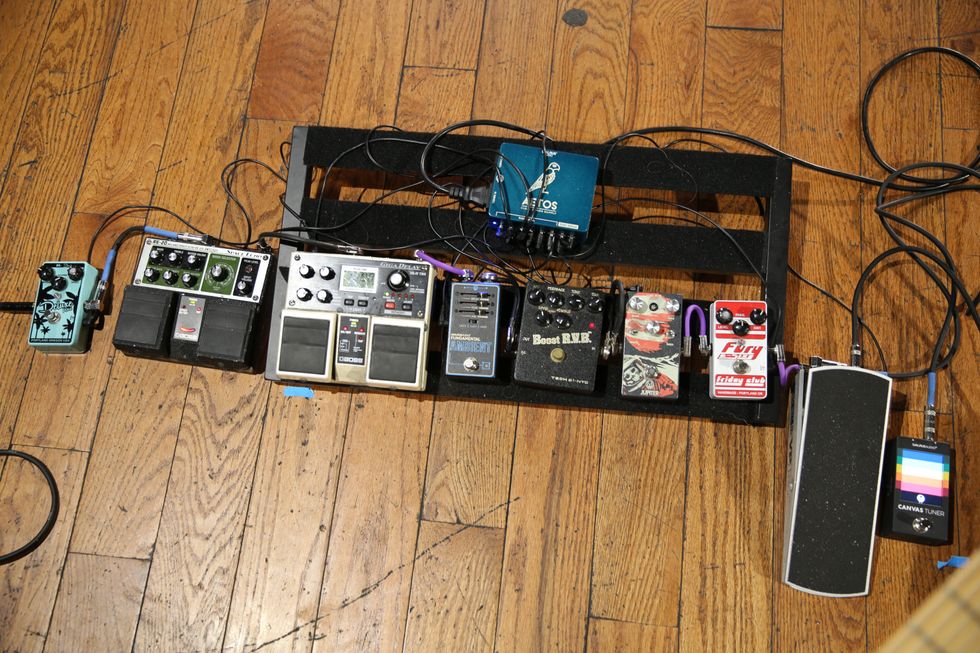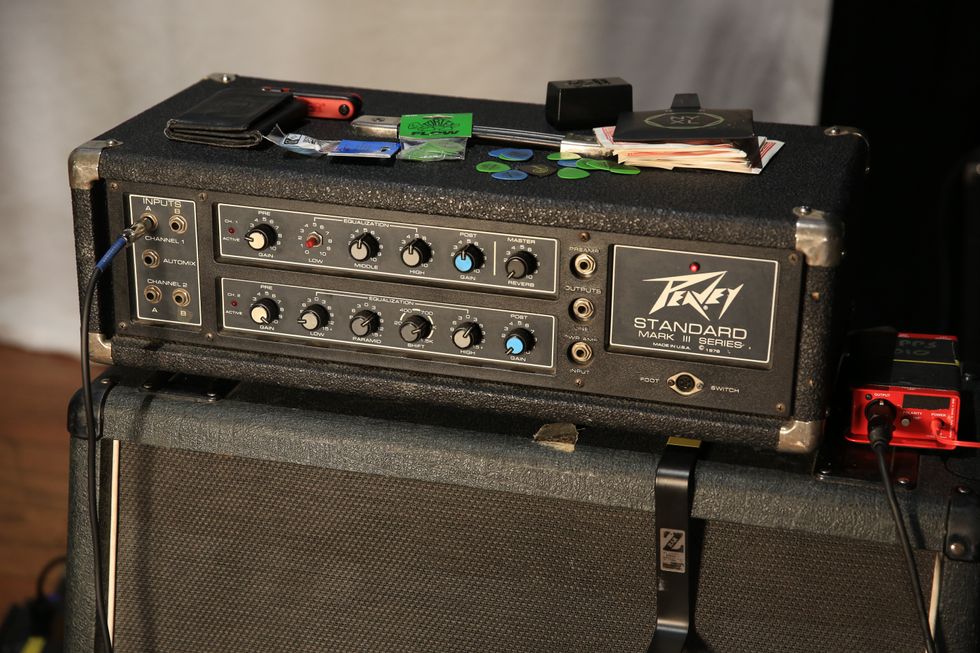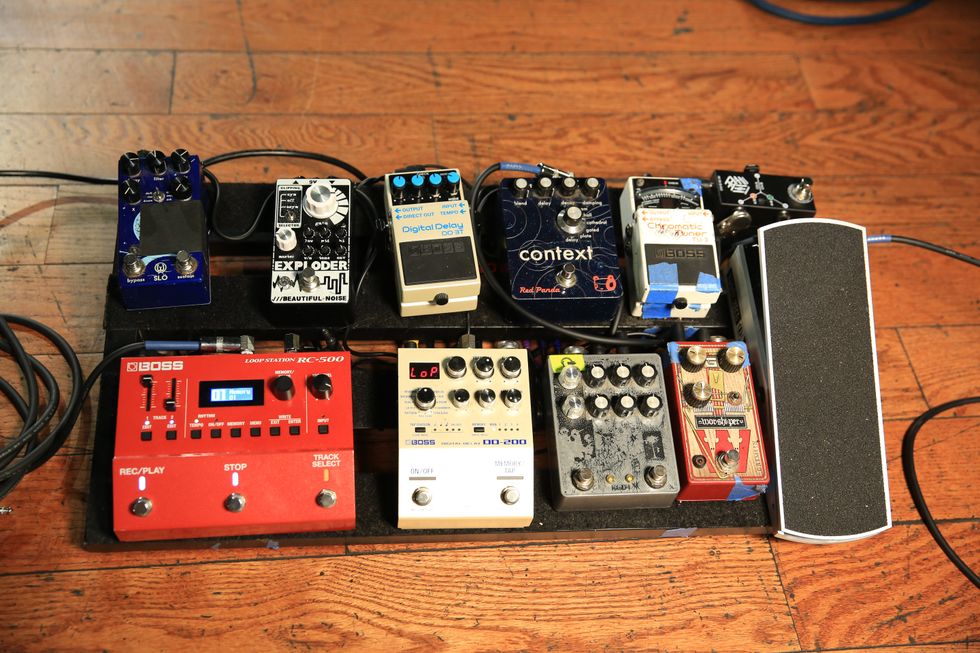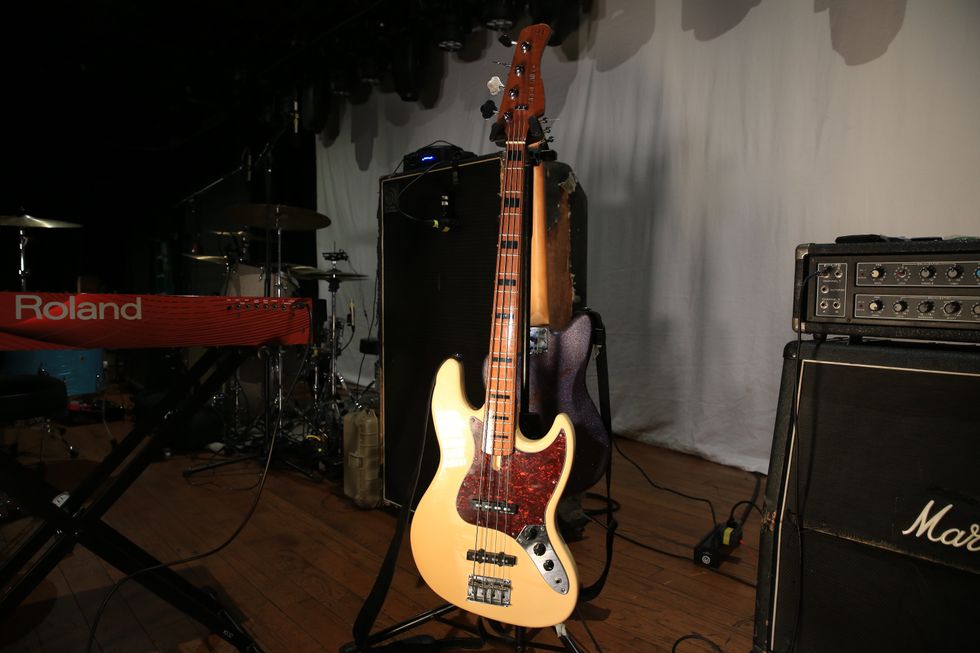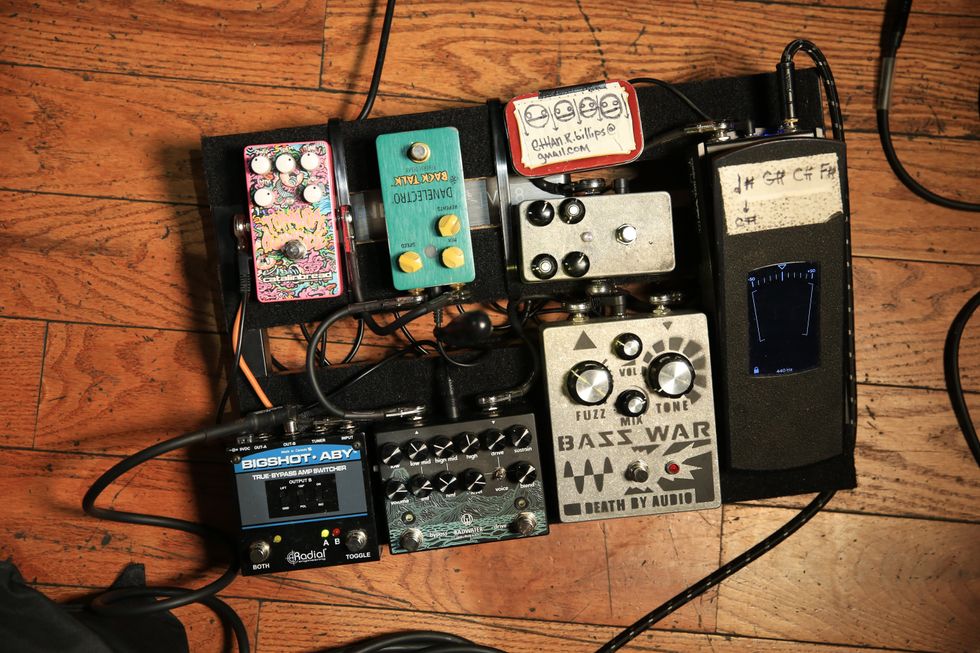
Working out of a oneman workshop in Woodstock, New York, Harvey Citron has been a respected member of the boutique luthier community for close to 40 years. Though best known for his hollowbody basses, Citron’s distinctively handcrafted instruments include solidbody basses, as well as a variety of guitars and baritones that have drawn the attention of artists across the genre spectrum, from Steve Swallow to John Sebastian to Doug Wimbish, among others.
With a background as both a guitarist and an architect, Citron is able to draw on his passion for both music and design when creating his absolutely unique offering of instruments. Aesthetically unique, yes. But he is also part of a very small group of guitar craftsmen with expertise in making their own pickups, and he winds, voices, and positions each one to complement the individual instrument. A true innovator, Citron’s distinctive, piezo-loaded and intonation-adjustable wooden bridge defines the combination of science and art.
Citron got his start as a luthier in 1974. Co-founding a partnership with Joe Veillette the following year, Veillette-Citron had an eight-year run during which a few hundred handcrafted guitars were produced. But eventually, Citron felt like a factory worker in his own business, putting in too many hours just to pay the bills. A desire to return to designing his instruments led him to set up shop as an independent luthier.
Premier Guitar recently caught up with Citron as he prepared to exhibit at the 2012 Montreal Guitar Show. Here he discusses his background and building philosophies, gives insights into modern lutherie trends, and even shares his thoughts on building a traditional acoustic guitar.
As a working musician and
former architect, which of the
two was the biggest inspiration
for your getting into
building guitars?
It’s actually very hard to separate
the two. I grew up being
interested in tools, working
with my hands, building things
since I was very little, playing
guitar by age 11, and loving
music completely. I attended
Brooklyn Technical High
School where I studied drafting
and engineering, and then studied
architectural design at City
College School of Architecture.
I was incredibly frustrated as I
started out working as an architect,
since I was not really doing
anything more than producing
working drawings of others’
designs. I was very young, but
had a fire burning inside to
create. I was creating through
my music—and my furniture
and interior design—but not
through my job. Then the
opportunity came to build a
guitar. Because of all my years
drafting and studying design, I
knew I could look at a guitar,
understand how it was built,
and could actually build it! I
could explore to my heart’s content.
So what better avenue for
a musician and a designer? I was
able to meld these two areas of
creativity that I loved.
Built for renowned jazz bassist Steve Swallow, Harvey
Citron’s AE5 Swallow bass is an acoustic/electric
5-string with a 36" scale length using Honduras
mahogany for the body and neck, spruce for the top,
and rosewood for the fretboard and bridge.
Which has had the biggest
influence on your work?
Again, it’s very hard to say
which has been the larger influence.
As a designer, I have
always been seeking out what
hasn’t been done yet, or to solve
a problem. Each of my instrument
models sets about creating
something new sonically and/
or physically—they are not just
pretty boutique instruments.
Because I am a designer, I can
play with woods, construction,
electronics, and shapes. Because
I am a musician, I can use those
elements to explore new tone.
What were your formative
influences insofar as guitarists,
bands, and instruments?
I started playing guitar in the
1950s at a very early age and
was listening to people like Elvis
Presley and Chuck Berry. But
I only had an acoustic guitar
at the time. We were poor and
my mom bought the cheapest
Martin you could buy—a
00-17 with a mahogany top and
no binding. I did everything
with that guitar and amplified
it with a DeArmond pickup
and an Ampeg Rocket amplifier.
Even later on, I was using
that same guitar for soul music.
Developing my own style back
then, I was pretty much a
rhythm guitar player for a long
time, but later on became a lead
player, too.
Eventually you began building
basses as well. Was your
attraction to the rhythm side
of playing part of the reason
for that?
I just love instruments and
playing. Building basses for
me was always part of the deal
from the beginning somehow.
Veillette-Citron’s first prototypes
were a 6-string neckthrough
electric guitar and
4-string neck-through electric
bass. Our first batch of instruments
was also mixed, and
I’m sure we built more basses
than guitars over the years our
company existed from 1975 to
1983. With the exception of
Alembic, bass design had not
really been explored that extensively
in the mid-’70s. While in
process of building our first two
prototypes in 1974, I visited
the Alembic woodworking shop
in Cotati, California. It was a
mind blower. I was enamored of
their work, and followed their
lead somewhat in construction
at Veillette-Citron. I have
always noticed that bassists are a
little more open to new sounds,
and are already hi-fidelity minded.
So many guitarists are looking
for the sound that a hero
of theirs made some time ago,
and they are under the illusion
that it if they have the same
equipment, they can recreate
that tone. I never had the desire
to build what has been made
before. It also seemed like there
were more orders for basses.
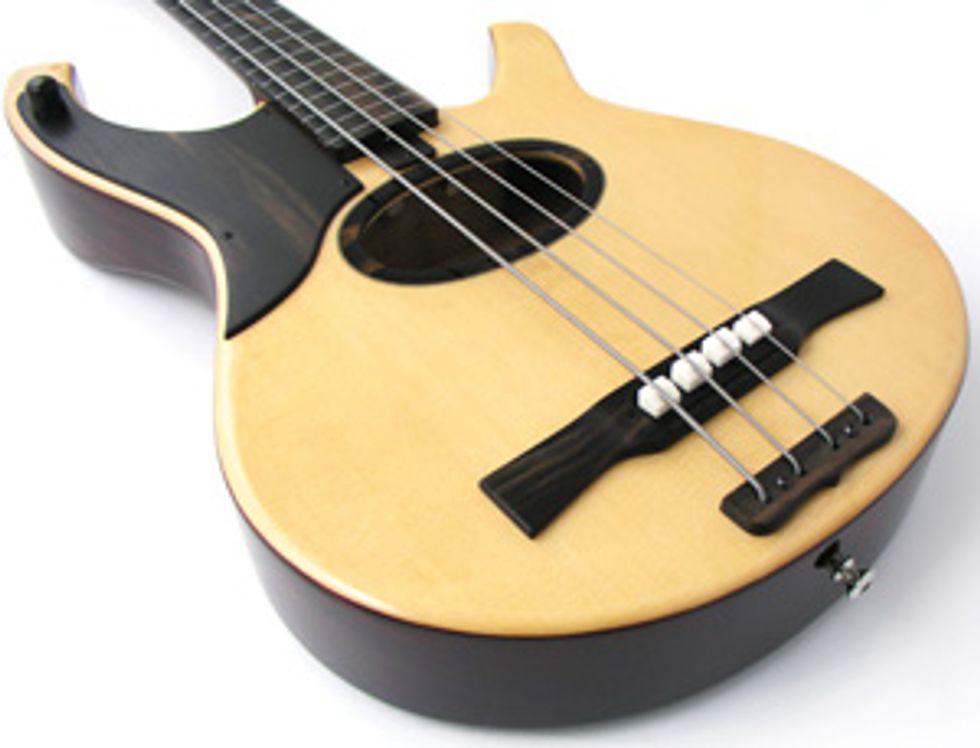
Citron’s intonation-adjustable rosewood bridge on the AE4 Swallow features bone saddles and six EMG under-saddle piezos.
Why is that?
It’s always been my impression
that there are far fewer bassists
than guitarists. Therefore, the
chances of a bassist working
are much higher than that of a
guitarist. And the quality of the
bassist doesn’t even have to be
as good necessarily, because you
need them and there aren’t that
many around. [Laughs.]
Can you tell us about your
pickups and how you got
started making them? Was
it a matter of wanting to be
involved in all components
of building? Was it out of
necessity or just an interest in
electronics?
Pickup making and guitar
making came about
simultaneously for me. I
knew some pretty serious
players in the guitar electronics
field way back, found out how
to wire a guitar, and then how
to build pickups. It was very
exciting to build a pickup. The
person who taught me how to
build them was Sal Palazolla,
who worked with Bill Lawrence
making pickups downstairs in
Danny Armstrong’s shop on
LaGuardia Place in New York
City. This was in 1974. The
first guitar I built had some
pretty strange pickups, and
people started asking me to
modify their guitars with my
pickups and different switching
arrangements. Veillette-Citron
started building prototypes in
late 1975 and those instruments
included my humbucking
pickups. We liked the idea of
having a part in virtually every
piece of the instrument, from
making our own pickups to
the bridge hardware and strap
pins. Though when I started
Citron Guitars and Basses in
1994, I had no desire to build
my own pickups, except for one
very unique single-coil that I
began to make for some models.
As time went on, I felt that
my pickups would make my
instruments more unique, so I
currently build several kinds of
single-coil guitar pickups, guitar
humbuckers, bass humbuckers,
and J-bass-style
pickups. They are
extremely popular and are,
in fact, used in other luthier’s
instruments.
What makes your pickups
unique?
One of the unique aspects of
my pickups is the multiple
gauges of wire in each pickup
using my own recipe. Each
gauge of wire has its own intrinsic
tone and I call my pickups
“custom blended.” I also voice
each pickup for its placement.
Pickups closer to the neck
require less resistance as there
is so much string excursion.
Pickups closer to the bridge
require more resistance since
there is so much less string
movement in that position.
What do you consider to be one
of the coolest or most important
advances you’ve made with
Citron Guitars and Basses?
The greatest and coolest thing
I’ve done has been the development
of my hollow instruments.
They are unique in
construction, electronics, and
most importantly, in their tone.
They are huge sounding, spatial,
deep, and possess incredible
sustain.
Like the AE5, the
body of the AE4
Swallow bass is
hogged out from 3"
thick Honduras mahogany
and utilizes
x-bracing for its
spruce top.
Can you walk us through the
evolution of your hollowbody
instruments? What was your “I
gotta do this” moment, and how
long did it take to get there?
My inspiration actually had a
lot to do with the Unplugged
show on MTV and having a
number of different instruments
in my hands. I had this idea
that I was going to have a hollow
bass, and initially, I thought
I was going to bend the sides
on it and have to make it headless
so it wouldn’t be neck
heavy. As it turned out, I ended
up deciding to hog out a piece
of mahogany for the bodies
instead, but the first three
or four were headless. I then
came up with an intonation adjustable
wooden bridge using
saddles with brass shims. With
it, you could move the saddles
but it would still actually react
sonically like a wooden bridge
with bone saddle. But this
didn’t allow me to use any traditional
piezo elements, so I was
using an undertop transducer.
It sounded okay, but it fedback
a lot. Additionally, by building
the headless instruments, I
realized I was limited with the
hardware, string spacings, and
nut width. The body was actually
heavy enough that I didn’t
need it to be headless, so I
moved to putting the head back
on the instrument.
So here I am, going back to a traditional piezo. I called up an old friend who’s a wellknown specialist in the field and told him I wanted to build an intonation-adjustable wooden bridge with piezos in it. He told me: “It can’t be done and no one cares.” [Laughs.] He knows a lot about this stuff but I wasn’t willing to just put a single 1/8" bone saddle in the bridge. I made the saddle 5/16" and made the whole bridge able to move with the piezo in it. That was the least I could do as far as I was concerned, and I left it at that for a while.
Since this model’s inception, I had been thinking this bass was going to be great for Steve Swallow. Steve tried the one with the 5/16" bone saddle, loved the sound of it, said he had to have it, and that he’s always wanted a wooden bridge with piezo. But he also said that an intonation-adjustable bridge would be a great plus if I could do it, because he’s such a nut about intonation. For some reason or other, that was all the impetus I needed to get this new bridge together. And it was then I realized how close I was to making it work. The idea came to me that if I considered my 5/16" saddle a sub-saddle, I could put moving parts (bone saddles) on top of it with piezo underneath. This led to my first intonation-adjustable bridge and it had a single piezo under the leading edge of what I call the sub-saddle (made from ebony). I put slots in it and made bone saddles with little pins in them so the saddle could slide.
There have been improvements since then—the subsaddle is now 3/4" deep and the saddle pins have been replaced with brass tabs. Also, the underside of the sub-saddle is segmented so each string acts as if it has its own individual support. This provides less likelihood of problems with warpage of the sub-saddle, which would cause uneven string pressure.
LEFT: 5-string bass pickups- the coils have been wound, and the pickups put together with their magnets, just before being placed in fully shielded covers
and potted in epoxy. CENTER: Pickup coil being wound. Photo by Janet Perr RIGHT: The interior of an AE5 Swallow bass.
Is there a particular current or
recent trend in lutherie that
you see going away in 15-20
years and is there one particular
current or recent trend in
lutherie that you see having a
major effect on guitar makers
in 15-20 years?
The unsustainability of many
of the beautiful hardwoods is
an ongoing problem in the
guitar business. I use Honduras
mahogany for my hollow instruments,
and also for the necks of
other models. Honduras mahogany
is the material that has been
used primarily and traditionally
for acoustic guitar bodies and
necks. It’s very stable, machines
easily, and has a wonderful tone
that’s sweet, warm, crisp, and
delicious. It has become harder
and harder to obtain, and the
quality I see has been going
down. The trees that are being
harvested are much younger,
and who knows how long the
supply will last. I think guitar
makers are going to have to start
using other woods. I have been
resisting the change, but I expect
it is inevitable.
In your 40 years of building,
what is one of the most
important advances you’ve
seen in lutherie or guitar
manufacturing?
I think one of the most
important advances in guitar
manufacturing is the widespread
use of CNC machines. These
machines make reproduction
very accurate and time efficient.
Also, polyester finishes are great
because they are extremely durable,
as opposed to nitrocellulose
lacquer and acrylic urethanes.
Do you utilize CNC?
No.
A number of boutique luthiers
are hesitant about using CNC,
feeling that it may take away
from the handcrafted aspect of
a build. Is that your reasoning
as well?
I’m open to having someone else
do particular things for me on
CNC and I don’t see any shortcoming
in that. The problem for
me is that I’m a small builder.
For instance, I’m building a
batch of five basses right now—
two of them are 34" scale, one
is a 35" scale, one is a 36" scale,
and the other is a prototype
for Steve Swallow. They’re all
different, both internally and
externally. How would I pay
for the tooling when the whole
mechanism of CNC is geared
towards production? That’s the
only thing that’s held me back as
far as that’s concerned.
LEFT: A top being glued on to an AE series bass. RIGHT: Harvey sanding one-piece Honduran mahogany AE5 Swallow necks. Photo by Janet Perr
There is one part of my hollowbody that is incredibly painstaking and there’s no advantage to how I do it. It’s just the only way I can, shy of using CNC. Imagine a hollowbody instrument that’s been hogged out a 3" piece of mahogany that has a waist cut. Trying to make that material on the inside parallel is a handcarving job for me. It’s time consuming, it’s not fun, and it’s not necessarily better. It’s just the way I have to do it [laughs]. That’s okay, I can do it, but CNC would be great for something like this.
What’s the ratio of guitars
to basses that you build? Is
it market driven or do you
build what’s inspiring you at
the time?
Except for a prototype that I’m
currently building for Steve
Swallow, everything is order driven.
As far as the ratio, it’s almost
all basses right now. What I’m
most known for are my hollow
basses and they require a lot of
time to build. Steve Swallow is out
there playing them, and while his
audience may be small, they are
loyal. People have been wanting
those instruments—either what he
plays, or what he plays modified
to be a hybrid between his bass
and my regular A-series basses.
How many instruments do
you produce in a year and
how can people find out more
about them?
My website has beautiful,
detailed photos of all of my
models, as well as a price list,
photos of the shop, upcoming
events, and videos. Many of the
guitars and basses I build are
customized to the preferences
of each musician. I will often
change the string spacing at the
bridge, the neck dimensions, and
tweak the electronics, among
other things to suit my customer’s
needs. I generally build
between 12 and 20 instruments
per year with the Swallow bass
being my most popular model.
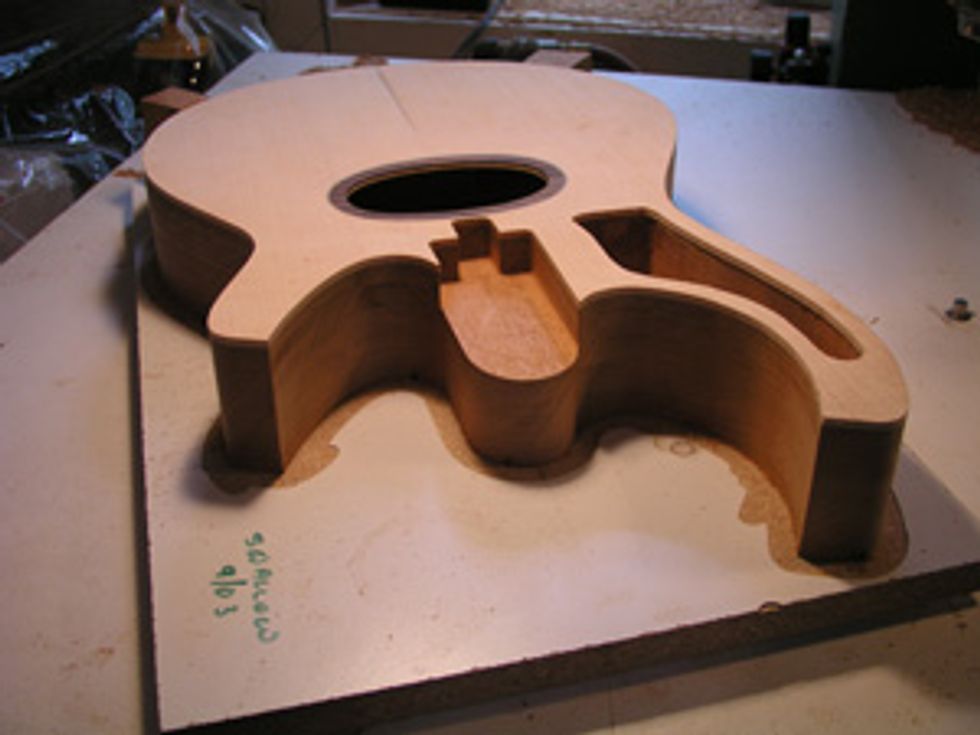
An AE5 Swallow bass after it has been shaped on the pin router. “This one features Steve Swallow’s very narrow neck—it might be the last body I made for Steve,” says Citron. Photo by Janet Perr
Given your expertise with hollowbody
instruments, have you
ever had the desire to build a
traditional acoustic guitar?
Yes, yes I do [laughs]. I’ve been
thinking about it for a long time.
But as you get older, I think life
gets busier somehow and the
opportunities for messing around
get harder to squeeze in. What I
need to do is learn more before I
do it. Unlike many other builders,
all this stuff has never really
been about the craft of building
for me. The craft is my vehicle to
hear what I imagine. For some
reason, I don’t really have the
desire to build a Martin guitar.
That said, my favorites are the
Martin D-35s from the ’60s, the
dreadnought Guilds of that period,
and the huge Gibsons. But I
feel that before I build an acoustic
guitar, I want to really understand
what made those guitars sound
the way they do.



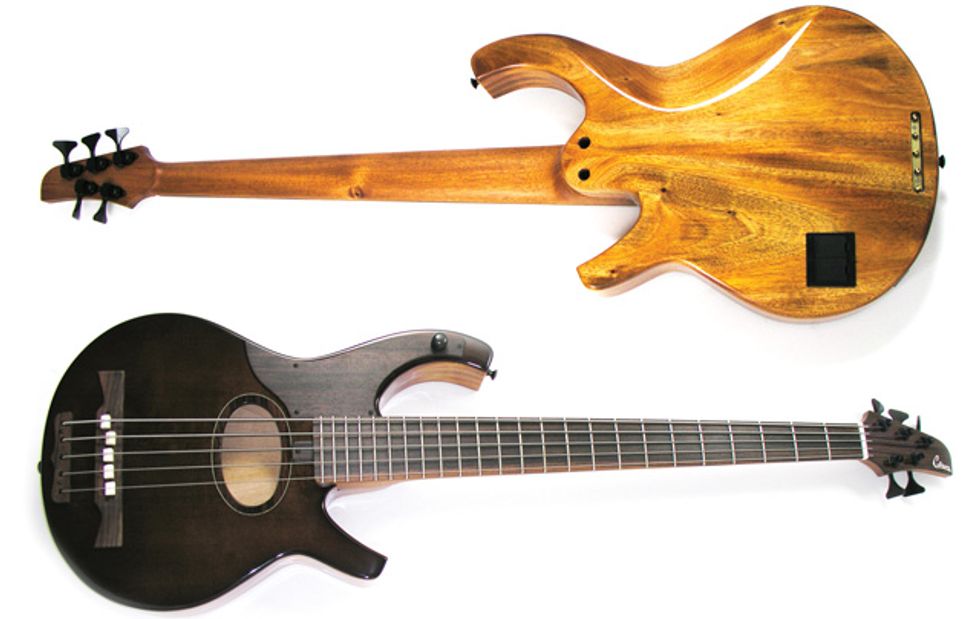


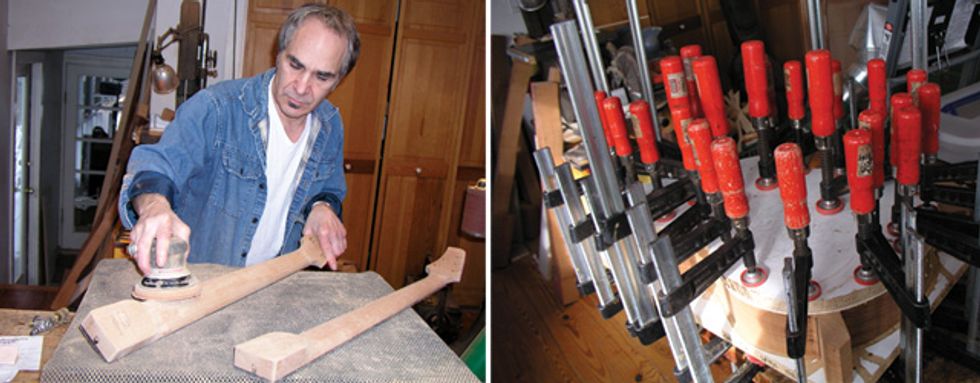
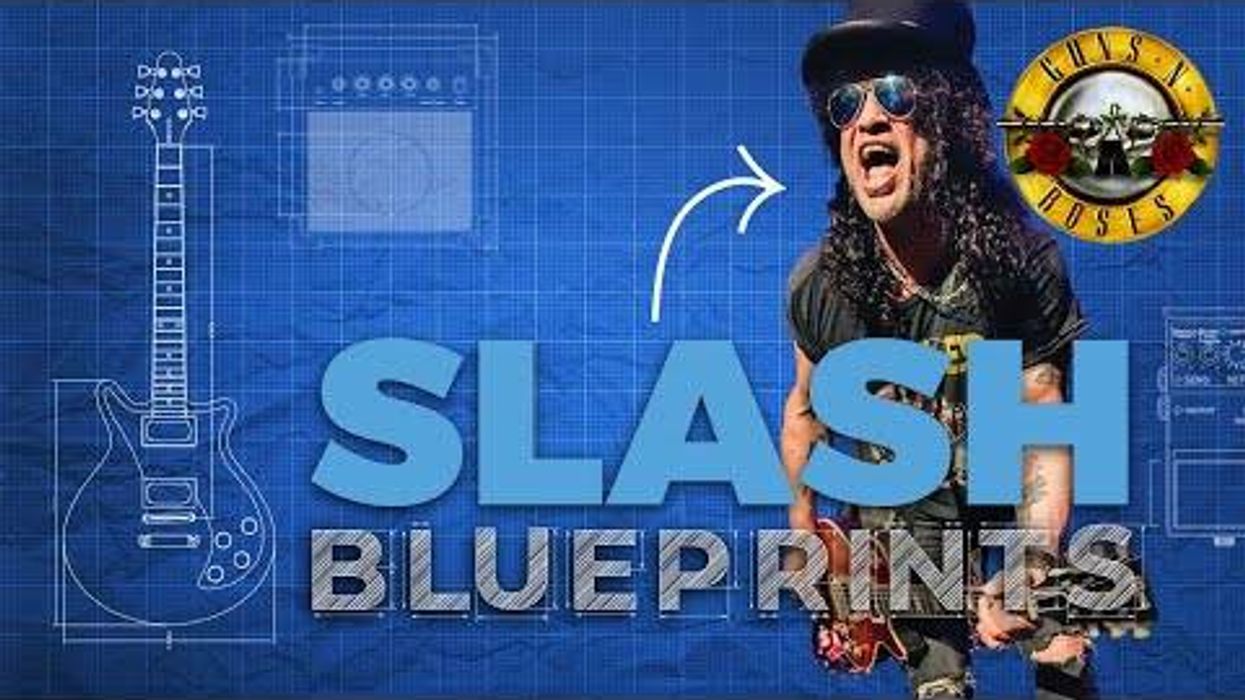

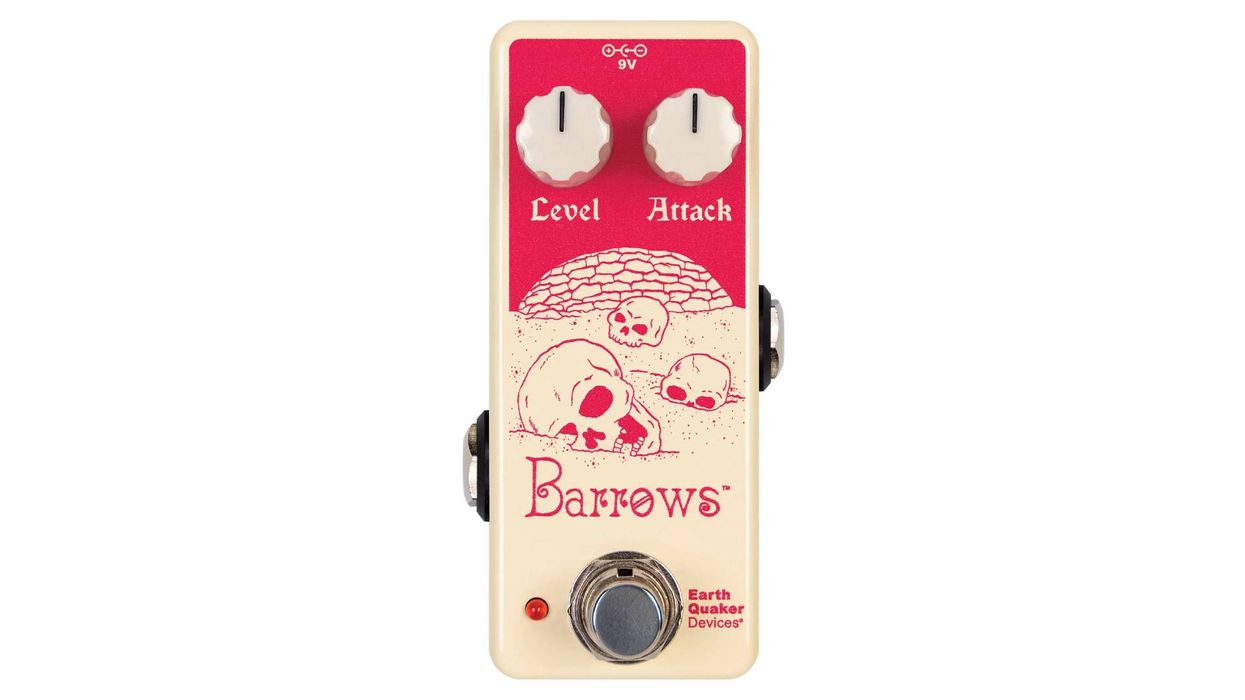
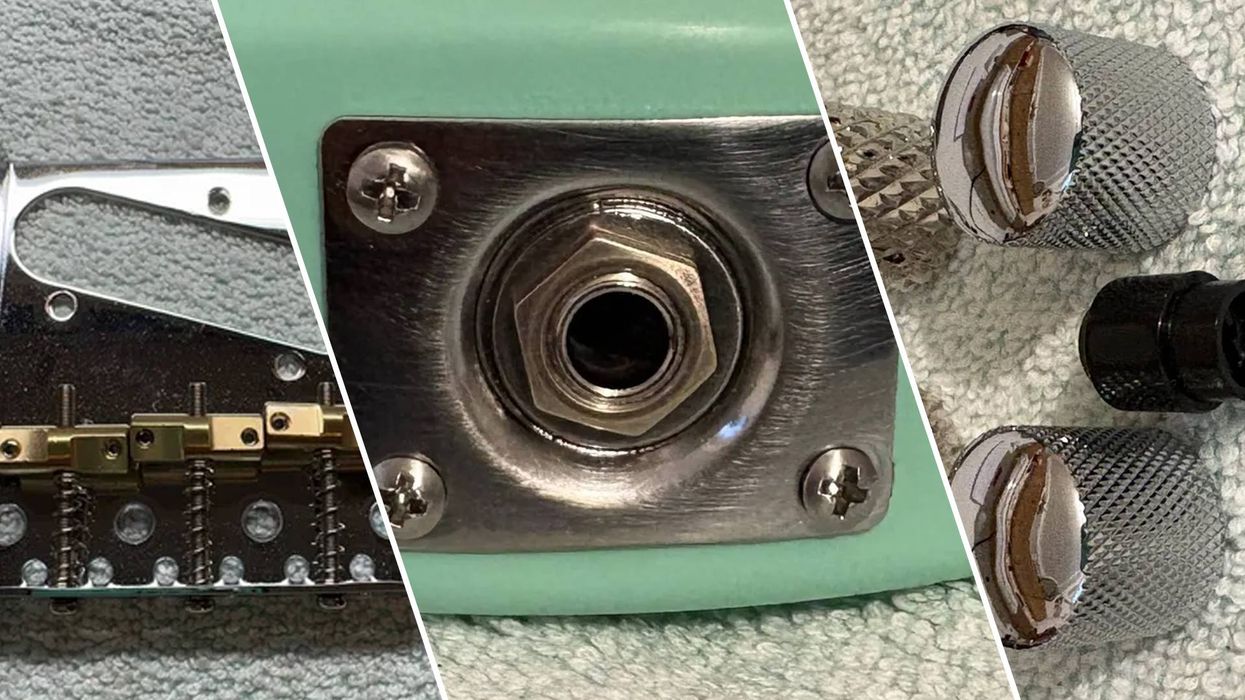
![Rig Rundown: AFI [2025]](https://www.premierguitar.com/media-library/youtube.jpg?id=62064741&width=1245&height=700&quality=70&coordinates=0%2C0%2C0%2C0)












 Shop Scott's Rig
Shop Scott's Rig

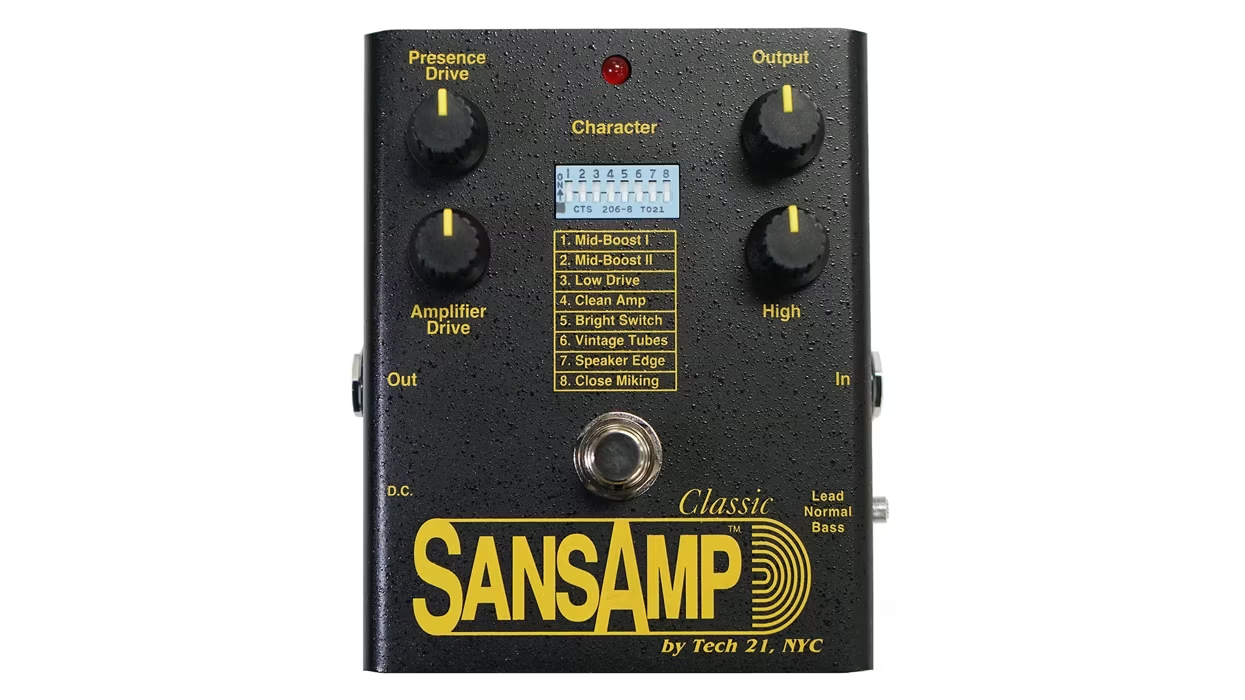
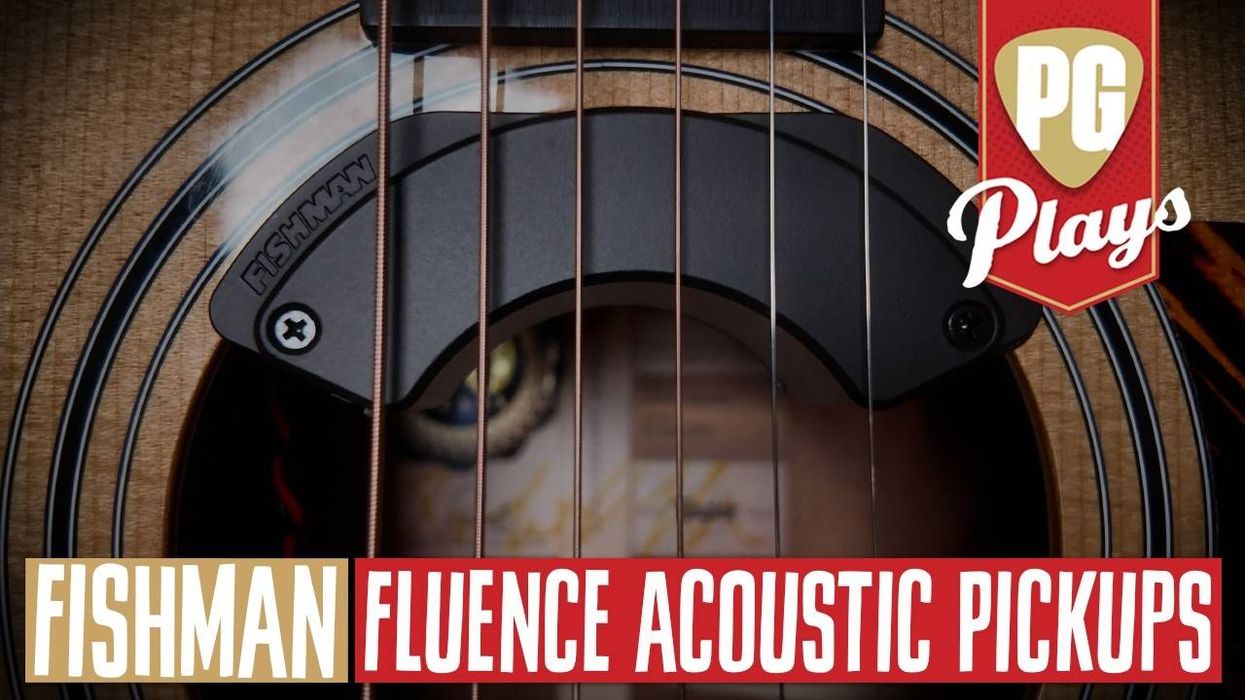
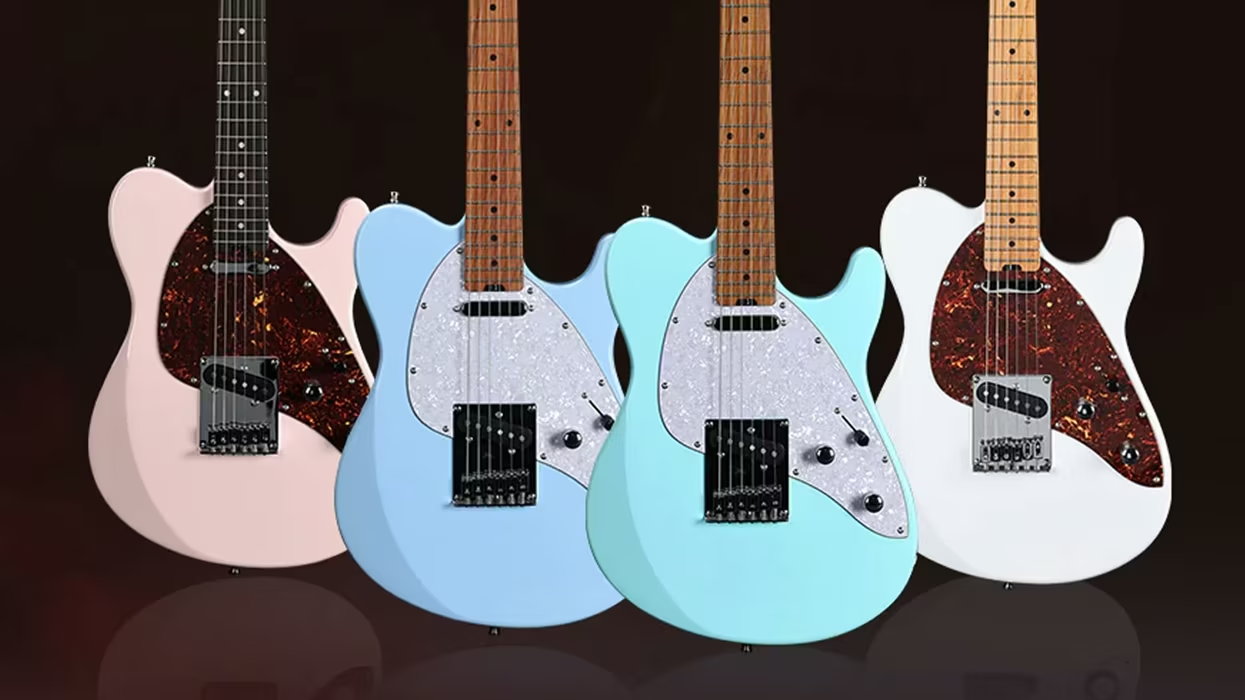
![Rig Rundown: Russian Circles’ Mike Sullivan [2025]](https://www.premierguitar.com/media-library/youtube.jpg?id=62303631&width=1245&height=700&quality=70&coordinates=0%2C0%2C0%2C0)
